

Smooth operators
More concrete was poured



More concrete was poured
Laura KANE Citizen news service
VANCOUVER — The Federal Court of Appeal’s decision to quash Ottawa’s approval of the Trans Mountain pipeline expansion is likely to delay the project for years, legal and political observers say.
The ruling means the National Energy Board must consider the impacts of increased tanker traffic on the marine environment and the federal government must consult more meaningfully with First Nations.
The energy board should first conduct its new review, which will involve receiving written submissions, consulting with Indigenous groups and holding hearings, said Chris Tollefson, a law professor at the University of Victoria.
The board’s first review took two years, and while the new assessment will be focused specifically on tanker traffic, Tollefson said

the board must seriously consider the effects on endangered southern resident killer whales.
“The reality is that this proposal as currently planned would impact orcas unless it is changed,” said Tollefson, who represented BC Nature and Nature Canada during the first energy board review.
There are only 75 southern resident orcas left and few have reproductive potential. The project would have a serious impact unless design changes were made, such as altering shipping routes, reducing tanker speeds or the number of vessels, Tollefson said.
“In light of what the court had to say, I don’t think that should be hurried. I think it needs to be done right. It’s a central feature of this project.”
Once the board issues a new recommendation to cabinet, the federal government will have to redo its final phase of consultation with all the affected First Nations

along the pipeline route.
Eugene Kung, a lawyer who has worked for project opponent the Tsleil-Waututh Nation, warned
that if Ottawa tries to rush consultation, the project could just wind up back before the court. see ‘WE’RE GOING, page 2 CP PHOTO
Frank PEEBLES Citizen staff fpeebles@pgcitizen.ca
The majority of the summer’s forest fire evacuees are now headed home from their temporary lodgings in Prince George. “The number of wildfire evacuees in Prince George has peaked at just over 3,000 and the majority have now returned home,” said City of Prince George spokesman Mike Kellett. “In fact, records at the Prince George Emergency Reception Centre indicate that nearly two-thirds of evacuees have returned home as wildfire conditions improve.”
As a consequence of the improving conditions on the fire lines, and the ability of evacuees to return to their communities no longer under threat, the City has been able to cut back the hours of operation at the Emergency Reception Centre. — see SMOKE, page 2


— from page 1
It will be closed over the Labour Day long weekend.
“As evacuation orders and alerts are lifted, evacuees concerned about air quality in their home communities should note that smoky skies advisories continue to change from day to day across all regions,” Kellett said. “According to Northern Health, community members should be advised to return home as air quality can vary greatly, and a home environment may be the healthiest. The Canadian Red Cross is also providing teams to assist with the recovery of communities that have been under either an evacuation alert or order.”
The City’s wildfire evacuation web page continues to provide updated information for evacuees in Prince George, along with links to various provincial and regional resources. This website also provides an option for people to subscribe to receive wildfire evacuationrelated emails from the City.
Prince George police are calling on the public for help to find a missing local man.
Regnald Percy Waite is the subject of police concerns. Prince George RCMP received a call on Thursday that drew their attention to the situation, and Mounties have ascertained Waite is indeed out of normal contact.
“Waite has not been seen since Wednesday, August 22nd,” said Prince George RCMP spokesperson Cpl. Craig Douglass.
“Officers have conducted many checks, but have been unable to locate Regnald,” he added. “This is unusual behavior for Regnald and his residence shows no signs that he planned to leave. His vehicles remain at his residence.”
The 68-year-old subject of concern is described as: Caucasian male; 167 cm (5’6”); 100 kg (221 lbs); blue eyes (wears glasses); grey hair.
If you have information about Waite, please contact RCMP at (250)561-3300 or anonymously contact Crime Stoppers at 1(800)222-8477.

— from page 1
“The federal government continues to take direction from the courts and interpret it through a lens of, ‘What is the least we can do?’ ...in the age of reconciliation, but also if the federal government is looking to avoid future appeals, they need to start aiming for something higher than the floor,” said Kung.
The court ruled that Canada must not only listen to First Nations during consultation, but also seriously consider their specific and real concerns and provide a response, including accommodations where necessary.
For example, the Coldwater Indian Band in British Columbia’s southern Interior raised concerns about the pipeline route passing through an aquifer that is the sole supply of drinking water for the First Nation’s main reserve, but the government did not reroute the pipeline or provide a new water source.
“They were undertaking the (final) consultations with First Nations in a rushed manner and not taking the time to listen, to try to accommodate and to have a genuinely twoway conversation, which takes longer than listening, taking notes and relaying them to decision-makers,” said Kathryn Harrison, a
political scientist at the University of British Columbia.
It’s highly improbable Trudeau’s government will be able to get the board review and Indigenous consultations done before the next election in the fall of 2019, said Harrison, who added that it’s difficult to say how the ruling will affect the Liberal government’s chances.
“How does Justin Trudeau respond to (Alberta Premier) Rachel Notley’s directives to him and withdrawal from the climate plan?” she asked. “What steps can he take to reassure the oil industry that Canada knows what it’s doing in reviewing major projects?
“To what degree does the government convince Canadians that buying this pipeline and committing to build a new one was a good investment of taxpayers’ dollars?
“It really depends on what the Trudeau government does.”
Notley announced Thursday she was pulling Alberta out of the federal climate plan until Ottawa gets the pipeline expansion back on track. She demanded that Trudeau appeal the ruling to the Supreme Court and hold an emergency session of Parliament.
Trudeau said Friday he is committed to getting the project done “the right way.” He

suggested he will follow the Appeal Court’s guidance on how to proceed.
“We are taking the time now to understand the court ruling, which addresses two things that are very important to this government – getting the science and the environmental protections right, and making sure we are walking forward in a true path of reconciliation and partnership with Indigenous Peoples,” Trudeau said after an event in Oshawa, Ont.
“We’re going to continue to move forward to get this pipeline built in the right way by acknowledging what the court has said.” Even if the federal government did seek leave to appeal and the Supreme Court agreed to hear the case, that would take 18 months to two years, experts said.
The expansion project would triple the bitumen-carrying capacity of the Trans Mountain pipeline between near Edmonton and Metro Vancouver and increase tanker traffic in the Burrard Inlet sevenfold.
Kinder Morgan Canada Ltd. first announced the proposal in 2012 and shareholders voted Thursday to sell the pipeline to Canada for $4.5 billion.
see related story, page 3


Tyler DAWSON Vancouver Sun
For a decade, the West was in. In 2006, Stephen Harper, having brought the Conservative party to power, said almost exactly that, in front of party faithful in Calgary.
But now, there’s little doubt that Alberta’s feeling aggrieved. Western alienation, always there, is now located somewhere at the nexus of a Venn diagram featuring the economic downturn here, the carbon tax, equalization payments and the struggle to get pipelines built.
“There is that overall sense that when central Canadian issues –steel or autos or dairy – are in play, they’re a priority, and when western issues are in play they’re either not taken seriously or they are of such a secondary nature that they’re not thought through carefully enough and they are essentially botched,” said Faron Ellis, a political scientist at Lethbridge College in southern Alberta.
And that’s not helped by Thursday’s Federal Court of Appeal ruling, which ensures that pipe, while it may be laid eventually, in Kinder Morgan’s Trans Mountain pipeline, isn’t going to be done soon.
“We’re getting to the stage where Trans Mountain is just botched,” said Ellis. Consider, he mused, if the response would be different if a Quebec hydro project had been stalled by the courts.
This pipeline is an atypical case, with unusual enemies, complicating any strict analysis of western discontent. And while Trans Mountain may not be, alone, enough to create an enormous opening for a browbeating, proAlberta populist, in the context of the rest of the Venn diagram, there’s political opportunity. And tapping into that sentiment might not be a foolproof strategy – but it’s out there.
“Elements of western alienation, for lack of a better term, run deep, and also just below the surface in Alberta political culture,” said Ellis. “There’s room for a provincial
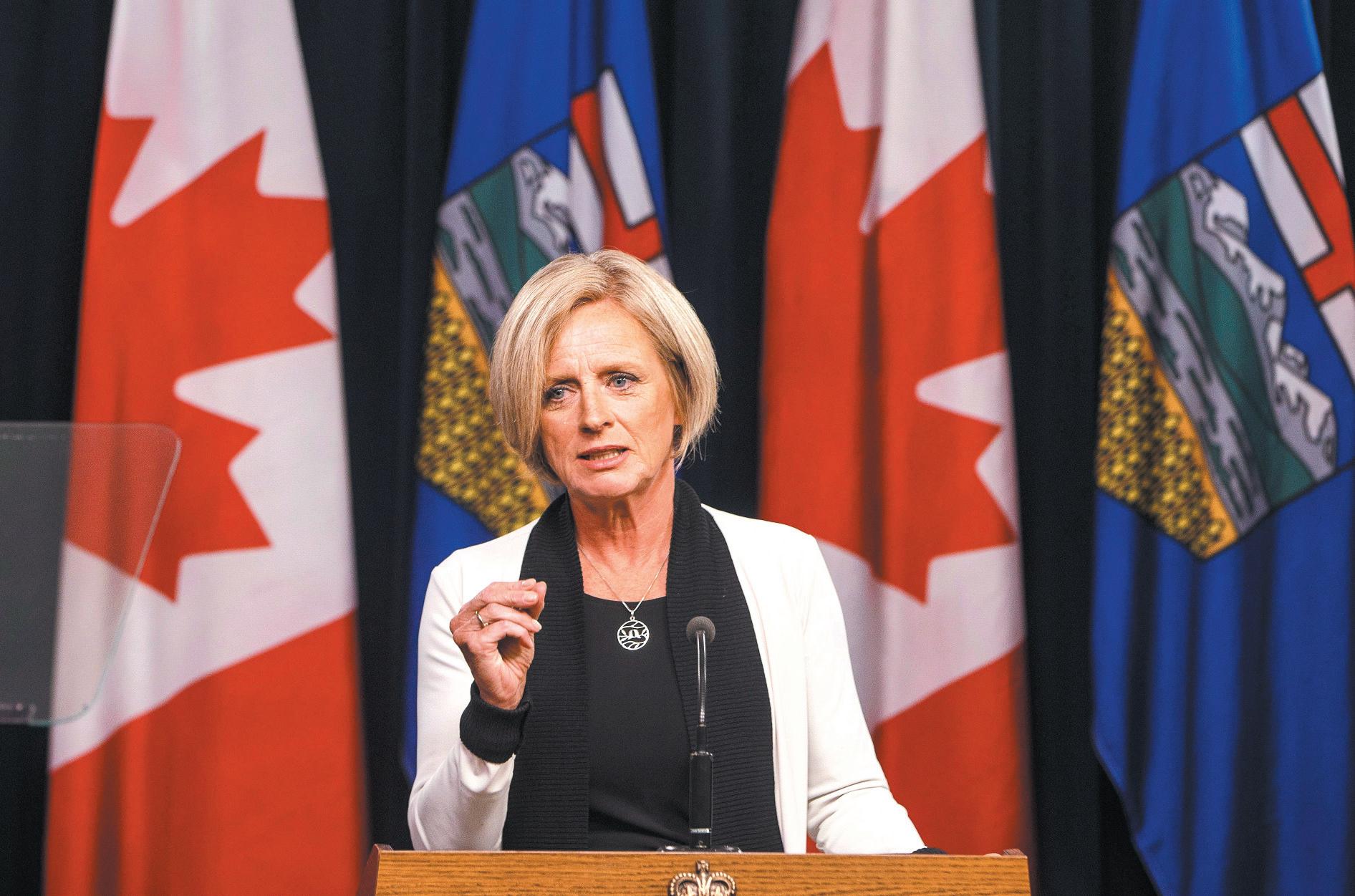
The court decision means that the federal government’s proposal to buy the pipeline, and Alberta Premier Rachel Notley’s brawler’s tactics standing up to a hostile Premier John Horgan in British Columbia, didn’t really work, at least so far.
premier to champion the west, his province’s interests, but the west more generally.”
If time’s a flat circle, it might be that politics is, too. There are echoes here of Alberta’s past feuds – “let the eastern bastards freeze in the dark,” was the refrain when the Pierre Trudeau Liberals introduced the National Energy Program –with the rest of the country.
“We’re at about the middle of the third iteration of this cycle,” said Ellis.
The complication, this time,
according to experts, is that this fight isn’t between west versus east – the normal axis for western alienation – but rather Alberta versus British Columbia with the federal government backing Alberta. (It wouldn’t totally be the first time, pointed out University of Alberta political science professor Jared Wesley: former premiers Alison Redford and Christy Clark, in 2013, met for the “Starbucks Summit” photo op to try and patch up B.C.-Alberta differences on energy policy.)


“I’m not saying that this is this generation’s turn to slag Ottawa… we’ve got this weird animosity between Alberta and B.C. that we haven’t seen for years,” said Wesley.
And western alienation, always tied intimately with populism, said Wesley, is rising up at a time when conservative populism is enjoying a surge in popularity. It’s fuelled by a sense that people are being left behind, and, he said, it’s an opening for United Conservative Party leader Jason Kenney.
Speaking to reporters in the parking lot of a Calgary diner, Kenney took issue with the decision, saying the questions pondered are not “academic questions,” but rather have real-world consequences for Albertans and Canadians, with jobs that will be lost because of the ruling. Kenney, saying he had just met with energy CEOs, said he’d heard expressions of western alienation among them.
— see ‘SHE HAS, page 4
VICTORIA — Victims of landslides that swept through parts of British Columbia’s south central Interior are getting a boost from the provincial government.
The Public Safety Ministry says disaster financial assistance is now available to British Columbians affected by landslides on the weekend of Aug. 11 and 12 in the ThompsonNicola regional district, including Cache Creek, Ashcroft and the Bonaparte Indian Band. The assistance is available to homeowners, residential tenants, small business owners, farmers, charities and local governments that were unable to obtain insurance to cover disaster-related losses.
Applications for assistance must be submitted to Emergency Management B.C. by Nov. 28.
Financial assistance is provided for each accepted claim at 80 per cent of the amount of total eligible damage that exceed $1,000 to a maximum claim of $300,000.


James McCARTEN Citizen news service
WASHINGTON — Foreign Affairs Minister Chrystia Freeland gave a cold shoulder to U.S. President Donald Trump and cozied up instead to her American trade counterpart Friday as Canada’s effort to re-enter the North American free-trade fold fell short of meeting its end-of-week deadline. With a pledge to resume talks next week, Freeland spoke of progress, of optimism and of her determination to get a deal that’s good for Canadians – a remarkable show of restraint on a day that began with another blast of now-familiar Trump bombast that landed like an anvil on the negotiating table.
Any deal with Canada would be “totally on our terms,” the Toronto Star quoted Trump as saying in an off-the-record aside during an interview with Bloomberg News.
“If I say no – the answer’s no. If I say no, then you’re going to put that, and it’s going to be so insulting they’re not going to be able to make a deal,” he reportedly said, adding: “I can’t kill these people.”
Freeland studiously avoided talking about the remarks all day, never once mentioning the president by name during her multiple media appearances, including a long-awaited news conference at the Canadian embassy. Indeed, whenever Trump’s name came up, she showered her opposite number –U.S. Trade Representative Robert Lighthizer – with praise, suggesting the two of them are engaged in a joint effort to overcome their mutual impasse, regardless of what the White House might think.
“My negotiating counterparty is Ambassador Lighthizer and, as I’ve said, he has brought good faith and goodwill to the table,” she said when asked directly about Trump’s comments.
“I have now been working with Ambassador Lighthizer and his team for more than a year. We have had some very intense periods of working together and Ambassador Lighthizer and his team are very experienced professionals. And they absolutely do bring good faith and goodwill to the negotiating table.”
Pressed once more to talk Trump, she said curtly: “I’ll take the next question.” Trump confirmed the authenticity of the Bloomberg News remarks in an afternoon tweet.
“Wow, I made OFF THE RECORD COMMENTS to Bloomberg concerning Canada, and this powerful understanding was BLATANTLY VIOLATED,” Trump wrote – ignoring the fact that the remarks were reported via an anonymous source by the Star, unencumbered by any such restrictions.

“Oh well, just more dishonest reporting. I am used to it. At least Canada knows where I stand!”
Just prior to Freeland’s news conference, the USTR confirmed Trump had notified Congress that he intends to sign a trade agreement in 90 days with Mexico – and Canada, if Ottawa decides to join in. The talks are scheduled to resume Wednesday in Washington.
“Today the president notified the Congress of his intent to sign a trade agreement with Mexico – and Canada, if it is willing – 90 days from now,” Lighthizer said in a statement Friday.
“We have also been negotiating with Canada throughout this year-long process. This week those meetings continued at all levels. The talks were constructive, and we made progress. Our officials are continuing to work toward agreement.”
Throughout the day Friday, it became increasingly clear that Canada and the
U.S. would be unable to reach an agreement. Dispute settlement, Canada’s cultural exemption and access to Canada’s dairy market continue to be obstacles to a deal.
But, by the end of the day, both sides expressed optimism heading into next week.
“We know that a win-win-win agreement is within reach and that’s what we’re working towards,” Freeland said.
Trump, according to the Star report, said he frequently reminds Canada that if necessary he will slap painful tariffs on auto imports. Such a move, experts warn, would inflict heavy damage on the countries’ deeply integrated auto sector.
“Off the record, Canada’s working their ass off. And every time we have a problem with a point, I just put up a picture of a Chevrolet Impala,” he said. The Impala is built at the General Motors plant in Oshawa, Ont.
Prime Minister Justin Trudeau, speaking Friday in Oshawa, brushed off a question about Trump’s comments, saying that “over

the past year and a half there’s a lot of things that have been said from time to time.”
This week’s new round of U.S.-Canada negotiations had initially generated hopeful signals from both camps that a deal could be struck by the end of the week – but difficult discussions about dairy and dispute settlement persisted.
Trump has repeatedly criticized Canada’s dairy industry and has used the threat of tariffs on Canada’s auto production to push for concessions. But Canada’s dairy industry – backed by Quebec politicians of all stripes – is adamant it won’t stand for the government allowing the U.S. any more market access, saying it has compromised enough on past trade deals with the European Union and Pacific Rim countries.
Another lingering sticking point is Chapter 19, set up to resolve disputes among the three countries and industry around how to implement NAFTA rules. The U.S. wants it out of the deal, but Canada says it must be included.
‘She has been wrong on this since day one’
— from page 3
“This (ruling) damages national unity, let’s be clear about it,” said Kenney. “I’m never going to give up on Canada, but those of us who believe in the promise of federation, the rule of law, this is a bad day for us.”
The court decision means that the federal government’s proposal to buy the pipeline, and Alberta Premier Rachel Notley’s brawler’s tactics standing up to a hostile Premier John Horgan in British Columbia, didn’t really work, at least so far. Just weeks ago, Notley said the government was “batting a thousand” on Trans Mountain; Kenney pointed to her push for “social licence” – it was supposed to be obtained via a carbon tax – that was to get pipelines built.
“I have considerable regard for our premier, a capable person with good intentions, but she has been wrong on this since day one,” he said.
Whoever and whatever’s to blame, and whatever comes next, the Trans Mountain pipeline risks being heaped in with “a long litany of grievances,” said Ellis, where Albertans perceive their issues as underappreciated in Ottawa and elsewhere. And the blame could land, fairly or not, with the federal Liberals and Alberta’s NDP, in upcoming elections.
Yet, not everyone sees it that way. Martha Hall Findlay, a former candidate for leadership of the federal Liberal party, and now president and CEO of the Canada West Foundation think tank, said Albertans should actually look for the positives in the ruling: “If the court had come out and said ‘no, everything was fine, project go ahead,’ then a lot of the activists… would have continued protesting,” she said. “They can’t say that they’re not being listened to anymore. Yet, the fixes are not horrendous.”

Citizen
CHURCHILL, Man. — A deal has been reached to sell and repair a broken rail line that is the only land link for the northern Manitoba town of Churchill.
The community on Hudson Bay has been isolated since spring flooding in 2017 damaged the line and forced fuel and food to be flown in at skyrocketing costs.
The town said the deal includes the sale of the Hudson Bay Railway, the Port of Churchill and the Churchill Marine Tank Farm.
“This is great news,” Churchill Mayor Mike Spence said in an interview. “This is historic.”
A news release from the federal government late Friday said the assets have been purchased by the Arctic Gateway Group, a private-public partnership of Missinippi Rail Limited Partnership, Toronto-based Fairfax Financial Holdings and AGT Limited Partnership.
It said they are fully committed to the restoration of the Hudson Bay rail line.
“I want Canadians living in northern Manitoba and Nunavut to know that the government of Canada understands the importance of the line to their daily lives,” said Jim Carr, the minister of international trade diversification.
Dominic LeBlanc, the minister of intergovernmental and northern affairs and trade, added that it’s an important rail line for the people of Churchill and the surrounding communities who depend on it for their food supply and export of their grain.
It’s not clear how quickly repairs to the line can be done, but officials said in the news release that construction crews are mobilizing.
“Phase one of the project will be to repair the rail line, undertake safety and rehabilitation upgrades to the port and the railway assets,” said Paul Rivett, director of Arctic Gateway Group. “We will commence the repairs and do all we
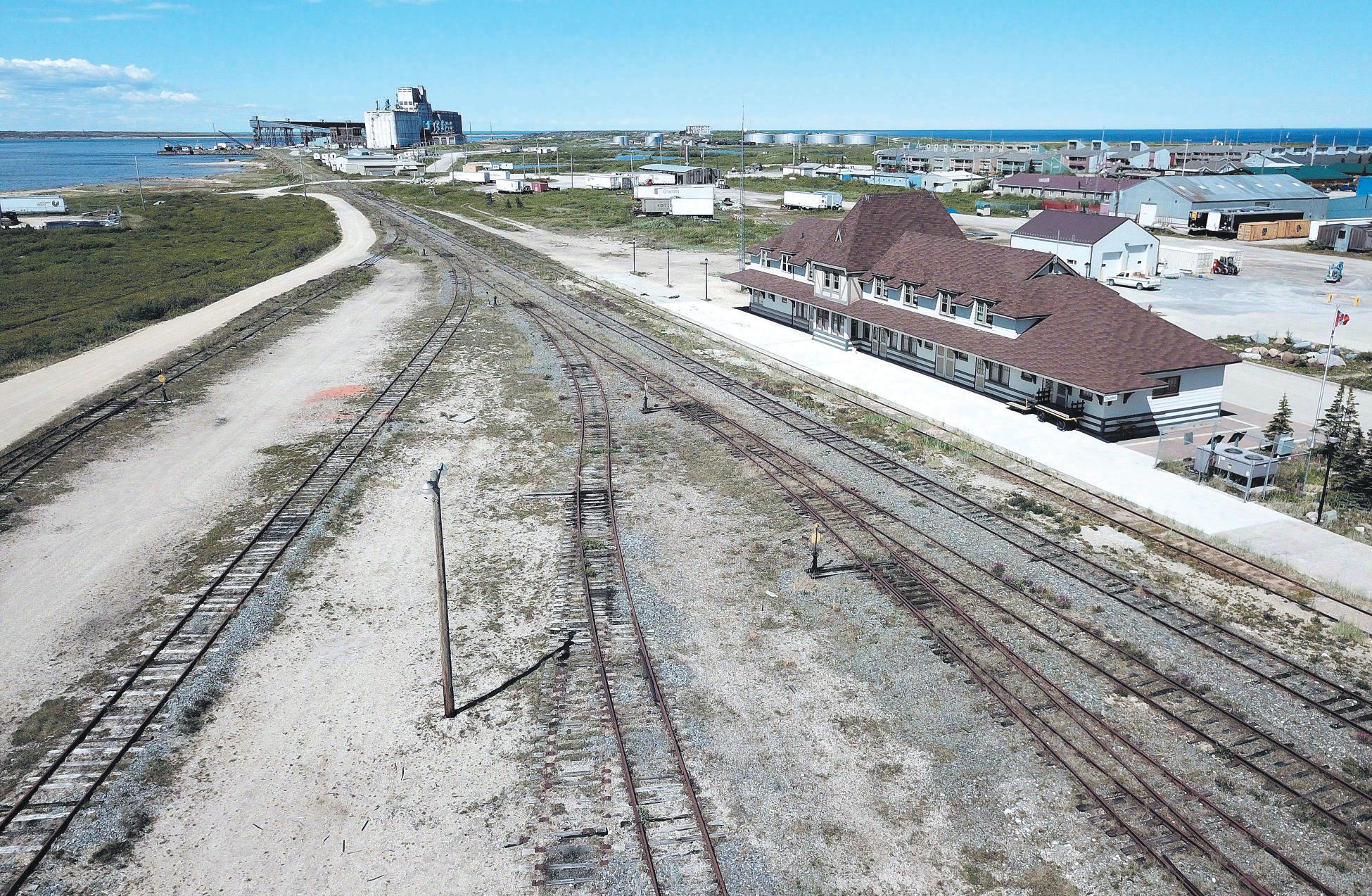
can to restore service expeditiously and safely.
“We are racing against time.”
Hudson Bay Railway has said the line has been losing money for years and the necessary repairs would cost tens of millions of dollars.
Manitoba Premier Brian Pallister said the deal is positive for all Manitobans, particularly those who live in Churchill and northern Manitoba.
“We are hopeful the repair of the rail line can occur as soon as possible so that service can be resumed before freeze-up,” he said in a statement.
Pallister said, however, that they have made the financial commitments and logistical ar-
rangements to ensure propane resupply for the winter.
Spence said he’s hoping the work can start next week and be completed this fall.
“We’ll let the contractors get it done and we’ll monitor it, naturally,” said the mayor. “We’re hoping this can get done in record time.”
Spence added that the deal is the light at the end of the tunnel.
“This community has been so solid, so strong and it’s been challenging, it’s been so difficult,” he said. “This afternoon, this evening, some of the folks I’ve just talked to are so happy, so pleased, and very excited about a bright future.”
PORTLAND, Ore. — The only Oregon hospital to offer heart transplants abruptly shut down its program Friday, leaving nearly two dozen patients on its waitlist to seek out-ofstate treatment and hundreds of others in limbo for post-operative care.
It came two days after Oregon Health & Science University in Portland said it was putting its program on hold for two weeks as it sought to replace three heart failure transplant cardiologists who had left or would be gone by Sept. 30. The decision by the leaders of the 32-yearold program is unusual. Nationwide, only a handful of other heart transplant programs have shut down because of staffing issues or
poor success rates.
Baylor St. Luke’s Medical Center in Houston temporarily closed its world-renowned program in June after The Houston Chronicle and ProPublica investigated the departure of several key doctors and an unusual number of patient deaths in a few years.
Hospitals in Philadelphia, South Carolina and Nashville, Tenn., also have halted their programs, but all have since reopened, The Oregonian/Oregonlive reported earlier this week.
In Oregon, the doctors are leaving for family and personal reasons, OHSU said.
The hospital initially said it would not accept donor hearts, do transplants or accept or evaluate new heart transplant patients for 14 days. It said, however, that the program’s remaining
doctor could handle post-operative care for patients who have already had the surgery.
But Thursday, The Oregonian/OregonLive reported that the final doctor also was leaving.
The hospital said in a statement Friday that all 20 patients on its waitlist will transfer to programs at other hospitals or have decided not to transfer but wait it out.
OHSU said it’s aggressively recruiting heart specialists, but it was unclear if or when the program would reopen.
The University of Washington said eight patients have already been accepted into its program in Seattle. An additional 327 patients who have had the surgery are being evaluated to determine the best way forward, the Oregon hospital said.
(CP) — A Manitoba politician is facing some heat after tweeting about the “hotness” of his former homeroom teacher.
Steven Fletcher, an Independent member of the legislature, posted a message on Twitter in reply to a woman who taught him in Grades 7 and 8.
The message thanks her for commenting on an article Fletcher had published and also revealed that he was attracted to her 35 years ago.
The tweet says: “You were always the hottest teacher. All the boys loved you in inappropriate ways.”
Many people – including Rochelle Squires, Manitoba’s minister for the status of women – have replied, telling Fletcher his remarks were inappropriate and offensive.
Fletcher says he meant no offence – many boys have crushes on their teachers – and people are reacting too harshly.
“It looks like we’re living in a society where it is becoming increasingly difficult to be human,” Fletcher said Friday.
“Yes, I had a crush on my Grade 7 teacher, and, yes, she was photogenic and very smart.” Squires tweeted that she was at a loss for words. “I don’t even know what to say – so, so insulting, demeaning, inappropriate.” Fletcher was minister of state in former prime minister Stephen Harper’s cabinet between 2008 and 2013.


Who’s influencing the influencers? That’s the question hovering behind a slew of recent stories on the digital go-getters who make money doing sponsored content online. On the one hand, they’re capitalizing on the freedom and far reach of online enterprise to succeed on what feels like their own terms. On the other hand, brands are also capitalizing on them – and the rest of us.
The Iiternet has made self-making easier than ever. With sponsored content, celebrities who can snag coveted slots in television commercials or splashes on Times Square billboards are no longer the only ones able to leverage their looks or their style or their skills or spunk to sell things.
All you need to amass an online following is a smartphone and an Instagram account, and once you have the followers, the advertisers will come calling.
In some ways, this is what the digital age is about: anyone, anywhere reaching everyone, everywhere through whatever form of expression they choose – mixed with good, old American entrepreneurship. Millennial models post alluring snapshots, makeup mavens review shimmery eye shadows, and teenagers enthuse over cartoon phone cases and asking you to “comment your fave.”
But freedom usually costs something.
The Guardian’s Julia Carrie Wong offered a platonic example this week in an expose on a company called – yes, really – Flat Tummy Co.
The company sells exactly what it sounds like: impossibly beautiful bodies in photogenic packaging.
Appetite-suppressant lollipops supplement “detox” teas that the advertiser says won’t only make you look good but will make you feel good, too (remember, ladies, it’s all about wellness in 2018).
The Kardashians promote Flat Tummy Co.’s feminine ideal. But the company’s products are also on the Instagram accounts of hundreds of women who’ve never starred in a reality television show and probably don’t even have famous fathers. These women, according to former employees, made $25 or $50 to Kim and Kylie’s hundreds of thousands.
lollipops and detox teas aren’t exactly what the doctor ordered.
As the Guardian reports, the ingredients the company uses are untested and unregulated. And that’s not the only way users get scammed in a world full of influencers: Last week, a viral tweet claimed that beauty influencers can rake in $85,000 from one company for a negative review of a competitor’s product, all without revealing money is in the mix as the Federal Trade Commission requires.
Now think about the 13-year-olds who have scrapped lemonade stands for screens over the summer.
“You’re not worth that much money,” the company would tell them, its representatives instructed to push prices down.
There are two problems with the Flat Tummy phenomenon. First, there’s the audience. Selling thinness encourages disordered eating, and appetite-suppressant
Then there are the influencers themselves, reduced to ratings by a brand trying to collect an ideal set of ambassadors, instructed on how to portray themselves using the product – and told what they’re worth.
That’s icky.
Now think about the 13-year-olds who have scrapped lemonade stands for screens over the summer, as Taylor Lorenz reported in the Atlantic.
Good for them for hustling, but there’s no one to stop them from getting hustled.
Several teens have already alleged one brand refused to pay them and then blocked them.
Companies’ own efforts to control the influencer market are iffy.
In the case of Flat Tummy Co., for ex-

We are lucky to live in such a beautiful province. However, we have once again had a summer that has delivered a stark reminder of the incredible power of the natural settings we love so much. For the second year in a row, summer has been trying for the people of British Columbia.
Yet another state of emergency, with forest fires driving thousands of residents from their homes, destroying property and scorching hundreds of thousands of hectares of our beautiful province.
Coping with the very real threat to life and property is hard, as is the forced displacement from home and the worry that comes from leaving life and property behind, in the path of the flames.
We had only just begun the recovery from the unprecedented 2017 wildfire season and were once again thrust into this summer’s fire season.
Over the next while, there will be trying times ahead for our friends, neighbours and communities.
But, as a province, we are strong and resilient, and we will
be there for one another and we will endure these hardships.
We are so thankful and proud of our first responders – the firefighters, police, military and emergency services personnel –who have dedicated themselves to keeping all of us safe, working around the clock to keep people out of harm’s way and in battling these horrific fires.
We owe them a debt of gratitude for their unwavering service and sacrifice in the face of danger.
And please, remember that through these unprecedented events, my colleagues and I are here to serve you. If we can help in any way, please do not hesitate to get in touch with us if you need our assistance.
– MP Dan Albas; MP Mel Arnold; MP Todd Doherty; The Hon. Ed Fast; MP Cathy McLeod; MP Mark Strahl; MP Mark Warawa; The Hon. Alice Wong; MP Bob Zimmer, B.C Caucus, Conservative Party of Canada
As a cyclist and motorist who uses the university hill road frequently (University Way), I am continually appalled by driv-
ers who feel the need to put the pedal to the metal at speeds in excess of 100km/h. Although a 70km/h posted speed zone, I have frequently been passed by impatient drivers traveling well above that, thereby shaving a precious 10-20 seconds off the trip to the top. This is a residential road frequented by wildlife, pedestrians and cyclists. I have had many close calls riding my bike, but others have been seriously injured, wildlife has been killed, and pedestrians put at risk.
It is too much to ask the RCMP to continually patrol this road, so it falls to the city to change it, forcing people to slow down and stop treating the road like a highway. There are many options including reducing to single lane traffic with an expanded cycling lane or bus lane. Rumble strips or photo speed traps are other possible solutions. With university classes starting, cyclist, pedestrian and motor vehicle traffic will increase significantly. I hold the City of Prince George responsible to make University Way safe for all. – Lawrence Fredeen Prince George
LETTERS WELCOME: The Prince George Citizen welcomes letters to the editor from our readers. Submissions should be sent by email to: letters@pgcitizen.ca. No attachments, please. They can also be faxed to 250-960-2766, or mailed to 201-1777 Third Ave., Prince George, B.C. V2L 3G7. Maximum length is 750 words and writers are limited to one submission every week. We will edit letters only to ensure clarity, good taste, for legal reasons, and occasionally for length. Although we will not include your address and telephone number in the paper, we need both for verification purposes. Unsigned letters will not be published. The Prince George Citizen is a member of the National Newsmedia Council, which is an independent organization established to deal with acceptable journalistic practices and ethical behaviour. If you have concerns about editorial content, please contact Neil Godbout (ngodbout@pgcitizen.ca or 250-960-2759). If you are not satisfied with the response and wish to file a formal complaint, visit the web site at mediacouncil.ca or call toll-free 1-844-877-1163 for additional information.
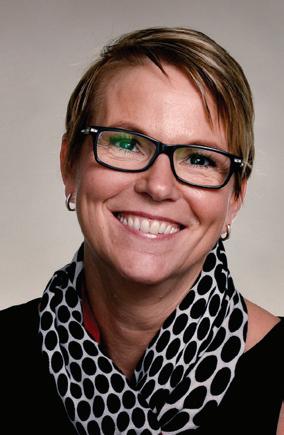

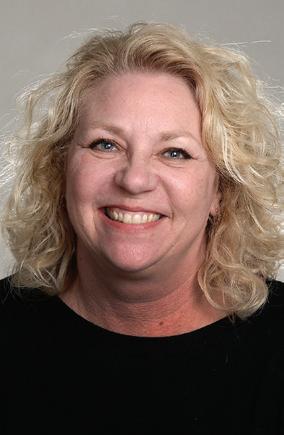


ample, Instagram already bans advertisers from using “before and after” images and similar strategies that promote “negative self-perception.” But it doesn’t ban individual influencers paid by those advertisers from doing the same thing. And should it have to?
When executives from the top tech companies appear before Congress next week, they’ll discuss how they moderate the content that appears on their platforms and whether that crosses the line into censorship.
Without rules of the road, free expression can collide with safety, and letting innovation loose means people may get run over along the way.
The same issues and tensions are at play in the influencer debate. The unregulated realm in which brands and influencers operate allows the companies and platforms that host them to be more competitive.
It also allows the influencers to be selfstarters and express themselves however they see fit.
But, as with permitting unrestrained speech more generally, that openness comes with collateral damage.
And if lawmakers decide to address the damage in either area through more regulation, these companies might well start worrying about losing their own influence.
If not for John McCain, I’d still be in an
Iwoke up a few days ago to a voice mail from my mother in Egypt consoling me about the loss of Sen. John McCain, RAriz. Later in the same day, I received two text messages from contraband phones in Egyptian prisons: My friends there were grieving his loss as well. This did not come as a complete shock. McCain, after all, played a vital role in securing my own release from prison in Egypt, and without him, I would not be able to pen these words as a free man in his honour.
That I can write this strikes me as all the more remarkable, considering that there was a time when I harshly criticized him. The senator has left our troubled world at a time when we need a man like him the most. As the lines continue to blur between fact and fiction, McCain always remained grounded in reality with an unwavering stance on freedom and morality. Advocates for human rights in the Middle East are shaken by his loss. We strongly feel his absence in the fight against oppression and tyranny in this era when human rights are far down at the bottom of the current administration’s list of priorities.
McCain’s door was always open to victims of dictatorships and authoritarian regimes. His staffers would jokingly complain that they felt as if their sole job was to save prisoners around the world. He was not only an American patriot but also a champion to millions who faced oppression. His voice echoed in some of the darkest dungeons and prisons around the globe.
During my nearly two years in prison in Egypt, the authorities sometimes allowed Islamic State recruiters into our solitary confinement wards. These extremists were deliberately deployed to convince me and other pro-democracy prisoners that hunger strikes and peaceful resistance were ineffective in the face of oppression. They argued that the United States had abandoned its own ideals and values by supporting the likes of President Abdel Fatah al-Sissi. Many of us responded to their propaganda by invoking the name of McCain. His stances proved that the West is not all the same and that American policy is not a monolith.
After soldiers marched onto Cairo streets in July 2013, McCain responded with a courage the White House did not have: He used the word “coup” to describe Sissi’s seizure of power and crackdown on the elected government. In 2015, McCain released a powerful statement advocating the release and protection of human rights defenders in oppressive countries
Mailing address: 201-1777 Third Ave. Prince George, B.C. V2L 3G7 Office hours: 9:00 a.m. to 5:00 p.m., Monday to Friday
General switchboard: 250-562-2441 info@pgcitizen.ca
General news: news@pgcitizen.ca
Sports inquiries: 250-960-2764 sports@pgcitizen.ca
Classifieds advertising: 250-562-6666 cls@pgcitizen.ca
like Egypt, of whom I was one. When I heard that McCain had written a letter calling for my release, I was taken aback. I had long opposed his hawkish policies in the Middle East, including his support for the war in Iraq, and, as a U.S. citizen, I had tirelessly campaigned against him in the 2008 presidential election. In fact, I still disagree with him on many of his past policies and positions. And yet I was grateful for his advocacy on the Senate floor and behind closed doors. As I laid in my prison cell, many times on the verge of death and with deteriorating health, his support offered a ray of hope that only another former prisoner could understand – that feeling of being unjustly imprisoned, hopeless and helpless. His voice was pivotal to obtaining the support of the United States in securing my release and the release of thousands of prisoners of conscience around the world.
I, like many others, benefited from McCain’s courage and have been touched by his heroism. He will live on in history as a flawed man whose policies were often subject to his biases and limitations – but also, more importantly, as a principled man who was committed to justice, democracy and human rights. His courage in the political arena intimidated and struck fear in the hearts of tyrants.
McCain was a testament to the fact that one could be a decent human and politician while remaining true to universal values and principals. Today, tyrants and dictators celebrate while we, the victims of authoritarianism, mourn and grieve.
Yes, the loss of McCain is an exceptionally devastating loss for human rights defenders across the world. His passing will in turn embolden demagogues, authoritarians and dictators around the world for many years after the news about his death has faded. He was a firewall against state oppression for many people, and it is unclear if there is anyone who will be able to fill his shoes.
I pledge to help others in the spirit of his courage and dedication, and I hope that he can somehow feel the ripple effect of the goodness he has brought into this world.
May God forgive his shortcomings and have mercy on his soul.
Soltan is a human rights advocate and founder of the Freedom Initiative.
Display advertising, digital advertising and website inquiries: 250-562-2441 ads@pgcitizen.ca
Reader sales and services: 250-562-3301 rss@pgcitizen.ca
Letters to the editor: letters@pgcitizen.ca
Website: www.pgcitizen.ca
Website feedback: digital@glaciermedia.ca
Member of the National Newsmedia Council A division of Glacier Media
Karin BRULLIARD Citizen news service
Goats get a lot of love on the Internet. They get less in the pages of animal cognition journals. The darlings of such research tend to be primates, whales, dolphins, dogs and horses. Goats, on the other hand, “are not considered to be the smartest cookies,” said Christian Nawroth, an agricultural scientist at the Leibniz Institute for Farm Animal Biology in Germany.
But Nawroth knows otherwise. He uses words like “creative” and “attentive” to describe goats. And based on the results of his latest study, he insists that the animals are also “complex.”
Goat subjects Nawroth and colleagues worked with while at Queen Mary University of London had already shown themselves to be adept at reading subtle human body language. Now, the researchers have found, goats are also able to distinguish happy people faces from sad ones – and they prefer happy.
The results of the new study, which involved scientists observing how 20 goats reacted to pairs of black-and-white images of unfamiliar people displaying the two facial expressions, showed that goats “are even way more complex than we thought,” said co-author Natalia Albuquerque, a doctoral student at the University of Sao Paolo.
The goats spent 50 percent more time approaching and nudging the happy-face photos, and in just over half of the trials, they interacted with the happy face first, said Nawroth, the study’s lead author. They veered toward the angry one first in 30 percent; in the remainder they ignored both faces, he said.
“We humans are a very different species, and we express ourselves in a very different way – even our pupils are different,” Albuquerque said. “If goats are sensitive to our facial expressions... that means that they possess very complex psychological abilities.”
It also puts goats in rare company. Other animals, such as sheep, had shown that they could recog-

nize human faces. But only dogs and horses had previously demonstrated an ability to differentiate between expressions. Whether the new finding means goats understand what emotion a human expression conveys is unknown –only dogs have proved capable of that – but it means they’ve at least got the first step in that process mastered, Albuquerque said.
It’s significant because of the sort of domestication goats underwent, the authors said. Unlike dogs and horses, which
have lived in close contact with humans as companions and workers for thousands of years, goats were domesticated to produce meat, milk, skin and fur. It could be that as humans selected individual goats for tameness, an ability to distinguish human expressions came along with it, according to the study, published in Royal Society Open Science.
Or it could be that the goat participants of this study, all residents of the friendly face-filled Buttercups Sanctuary in southeast Eng-
land, honed that skill. While some may have been abused by humans earlier in their lives, all those tested had resided at the sanctuary for at least a year, Nawroth said.
“They’re in a really, really nice and fun environment,” Albuquerque said. “The people are always bringing them dried pasta. That’s their favourite food ever.” (And it’s why dried pasta was used in the training for the study’s trials.)
But she said the Buttercups goats’ experience with happy expressions doesn’t make their per-
formance in the study less interesting from a scientific perspective. And that performance, she argues, should make people think. If goats see nuance in us, shouldn’t we also see nuance in them? “They probably feel, and they probably want certain things. But maybe this is also true for all the livestock species,” Albuquerque said. “If we’re showing that goats are more complex than we thought, maybe all nonhuman animals are more complex than we thought.”

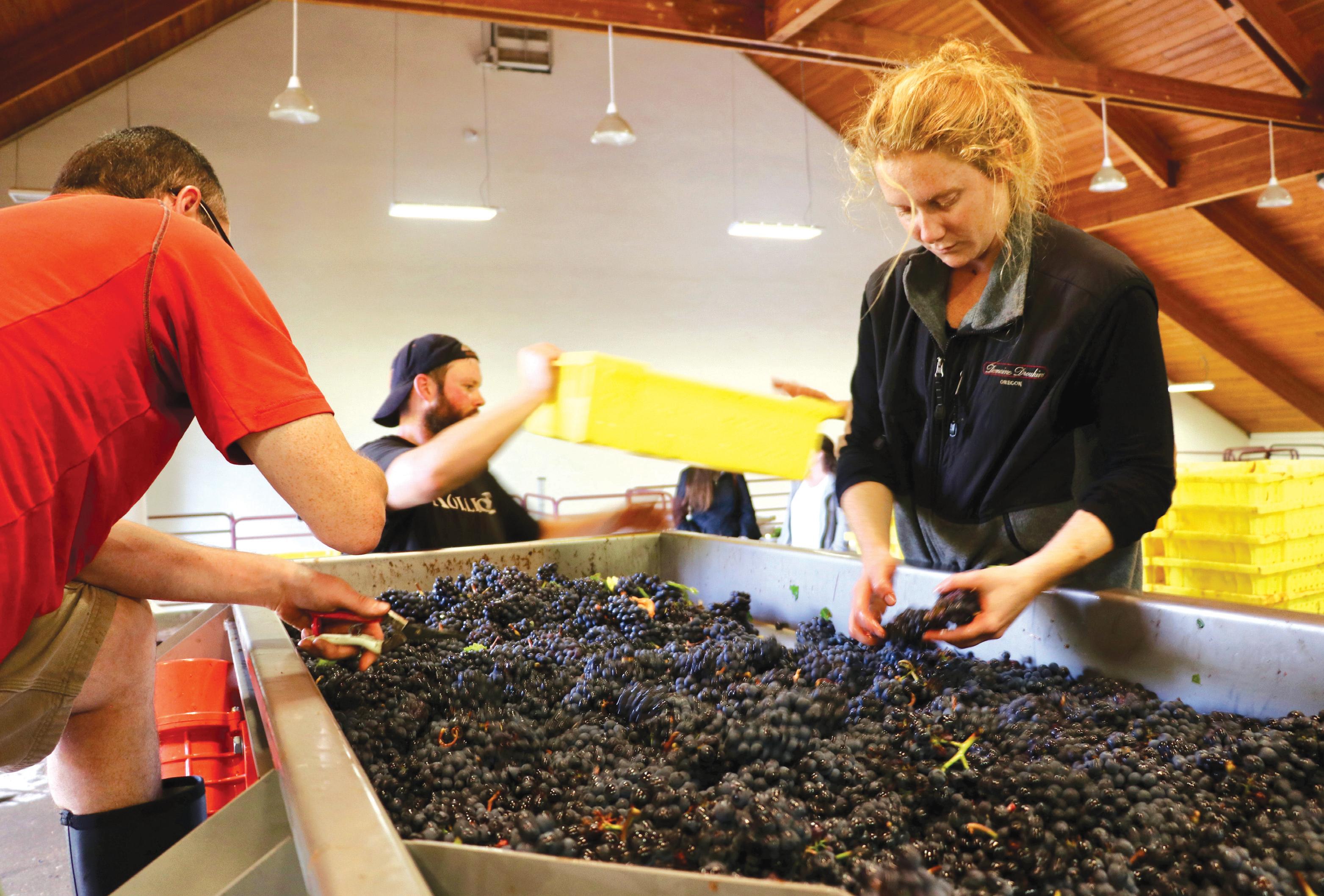
Alex PULASKI Citizen news service
Ididn’t realize it at the time, but for one frantic, exhilarating, exhausting September minute, I impersonated an Oregon winemaker.
With a newfound friend’s arms bracing me, and my wife and daughter madly clearing stems and gathering fruit below, my stomping feet released a purple rivulet of grape juice. Granted, our neophyte grape-stomping team’s results proved to be predictably poor, but that fleeting sense of creation lodged its seed in my memory.
That same palpable feeling, on a much grander scale, seems to hang in the air around the fall harvest in Oregon’s scenic Willamette Valley. Fulfillment and trepidation battle for ascendancy as winemakers keep one eye on the sky and another firmly fixed on the grape.
Weighty questions keep asserting themselves. How soon will it rain? When should we pick? And the biggest of all: Will this be one of those years to remember (a.k.a. lucrative seasons), especially for the region’s prized pinot noirs?
The final answer – that message in a bottle – begins to reveal itself on sorting tables, in fermenting vats and engorged oak barrels. Véronique Boss-Drouhin, who has overseen three decades of Domaine Drouhin winemaking on two continents, seemed hopeful.
“Put your ear here,” Drouhin gently commanded, pointing to a chardonnay barrel whose fruit had been picked nine days before.
Stopper out, head tilted, an insistent low whisper of bubbles in my ear.
“That sound?” she said. “That’s life.” ★★★ Oregon’s wines remain far from undiscovered – a Wine Spectator cover story declared the state “an American home” for pinot noir as far back as 2012. Yet compared with the better-known wine regions further south in California – Napa, Sonoma, Santa Barbara – the Willamette Valley remains relatively uncrowded and unhurried. At harvest, those two “un” words ofttimes translate to a third – unfettered access to the winemakers themselves. Interspersed with some romantic and memorable meals (such as those at the mushroom-centric Joel Palmer House in Dayton), every opened bottle tells a different story about its authors and when and how their work was captured.
On a September Saturday morning, as the sun fought past a misty rain, my wife and I took the winding drive up Parrett Mountain to the J.K. Carriere winery. Exiting our car, we immediately found owner and winemaker Jim Prosser whistling, walking and toting a shotgun.

“Robins can eat six times their weight a day in grapes,” Prosser announced, answering our unasked shotgun question. He wields it to frighten the birds, nothing more. Prosser qualifies as one of Oregon’s most entertaining and talented winemakers.
Open a spigot of conversation, whether in front sampling a 2015 Vespidae pinot noir or out back where the 2017 harvest has just begun to ferment, and Prosser’s words flow nonstop:
“The picking decision is the single biggest decision a winemaker makes. Once you cut the grapes they don’t ripen any more.
“What a vineyard represents is potential. It’s not celebrity that makes a great wine – it’s how close you can get to the grapes’ potential.
“What you get from small wineries is a distillation in a glass of what they believe about the world.”
Ask winemakers about their beliefs, their goals, their fluctuating levels of tension and relief at harvest time, and variations on the same refrain emerge.
At Domaine Roy & Fils, winemaker Jared Etzel appeared calm overseeing a production area where that day’s grapes were being sorted, but said, “I always get amped for harvest.”
“The first harvest day is very nerve-racking – it’s like going on a first date,” he said.
“You don’t sleep well.”
At Kramer Vineyards, owner Trudy Kramer lent a hand moving tables, chairs and table settings under a veranda after the sky opened scant minutes before guests were to arrive for a harvest dinner.
“Oregon is one of the hardest places in the world to make wine because of the variability of the weather,” she said. “We’ve picked as early as Aug. 23 to as late as Oct. 19. We
just never know what is coming.”
During harvest, her daughter and winemaker Kim Kramer says, “I might be kind of a perfectionist psycho but it’s necessary.”
Sharing the harvest with visitors, she says, completes the arc from grape to glass and sometimes creates lifelong fans.
“They come to me three years later and they want to buy that wine because they had the harvest experience,” she said. “There’s only so many weeks in the year when they can come and see that.
“And even though it’s exhausting, we’re giddy.”
A few years ago, Oregon winemaker Anna Matzinger dabbled in a bit of pinot noir psychoanalysis at my behest, trying to explain to me a grapevine’s motivations and how a winemaker has to anticipate and manipulate (my word, not hers) them.
Essentially, the vine’s primary purpose is to propagate itself. It does so by making its fruit as rosy and sweet and aromatic as it can, to attract birds. The birds – recall Prosser’s warning about robins’ appetites –consume the grapes, seeds and all, and may travel miles away while the seed is moving through the digestive tract, awaiting deposit in the soil.
At harvest, while the grapes are struggling to start their own journey, wine-lovers, like the birds, descend on Oregon vineyards from all over. A harvest luncheon we attended drew visitors from as far away as Brazil, and over breakfast at the sumptuous Black Walnut Inn I found myself listening to Pedro Parra, a wine terroir consultant from Chile.
At Roco Winery, as forklifts buzzed behind grape-laden semis, I ran into Samantha Withall, beverage director at the Hamilton, a restaurant in Washington, D.C. She was in the middle of a two-week
The first harvest day is very nerve-racking – it’s like going on a first date. You don’t sleep well.
— winemaker Jared Etzel
harvest vacation.
“You read about winemaking, and you learn all these terms,” she said. “But actually seeing all the different steps is totally different – it’s a beautiful thing to watch.”
There is, perhaps, no better Oregon wine country vantage point than from a secondfloor balcony at the Black Walnut Inn & Vineyard. In the early morning and late afternoon, the vineyard rows and nearby Douglas firs cast long shadows over rolling hills that yield to mowed hayfields in the distance.
Time it right and you will see pickers scurrying up and down the rows. We stopped one morning at a neighboring vineyard to observe them snipping bunches, filling their plastic buckets and dumping them into bins. Speed equals money, as they are paid by the bucketful rather than by the hour.
The pace remains quick at the winery crush pads, where the grapes are unloaded, usually de-stemmed mechanically and passed along sorting tables where workers manually remove damaged fruit. But as the grapes ferment in giant vats, a waiting game begins, punctuated by persistent checks of sugar level, temperature, color, acidity – a constant vigilance against something going wrong.
During vat fermenting, workers wield what looks like an oversized plunger to punch down the dense top layer of grape skins. The skins lend the wine its colour and character: take them out and instead of a deep ruby the same pinot noir grapes produce a clear pinot gris.
A handful of wineries have stuck with the old ways for the task of punching down. That means literal legwork.
“The foot is softer than a piece of metal or plastic,” Etzel of Domaine Roy & Fils told me. “Plus, you feel the temperature differences.”
I can relate to that, mostly, based on the event that inaugurated our harvest experience last fall. After a couple of alternating rounds of tacos and wine at the Carlton Crush Harvest Festival, our grape-stomping team made its pedestrian debut.
Afterward, a hose stood at the ready to rinse our tired, grape-skin-littered toes. Every now and then, when I peel back my socks, I search in vain for that tinge of purple that would have labeled these as the feet of a real winemaker.

Subscribe to The Citizen and get the best in local news, sports, arts and more delivered to your door five days a week
Call 250-562-3301 to subscribe today
Ted CLARKE Citizen staff
tclarke@pgcitizen.ca
Playing for the bronze medal at the Women’s Baseball World Cup in the shadow of NASA’s rocket launch pads in Viera, Fla., Amanda Asay and Team Canada found their Tranquility Base.
They beat the host Americans 8-5 Friday in 10 innings to clinch another piece of World Cup hardware.
“It was an incredible baseball game, probably one of the best ones of the tournament,” said Asay. “It was back and forth all day and pretty awesome to be part of. It’s always a pretty big rivalry.”
The 30-year-old from Prince George has been part of the national team since 2005 and now has five Women’s Baseball World Cups medals.
Ranked by Baseball America last year as the world’s seventhbest female baseball player, Asay won silver in 2008 and 2016, and bronze in 2006 and 2012. She also helped Canada to the silver medal at the 2015 Pan Am Games in Toronto.
“We have a couple silvers, so that was a good feeling getting into the final game, but this bronze medal, beating the Americans on their home soil in such an incredible game, was pretty special as well.
“We were playing international tiebreaker rules, so we started with baserunners on first and second and that started from the eighth inning on and amazingly no one scored until the 10th.”
Asay, Canada’s starter, pitched 5 2/3 innings and gave up just

five hits while allowing no earned runs with three strikeouts and two walks.
Canada outscored the Americans 5-2 in the 10th. Nicole Luchanski started it with a bunt which left everybody safe and the bases loaded. Daphnee Gelinas then hit a run-scoring single – her fourth RBI of the game – and Anne-Sophie Lavalee made it 5-3 with a bases-loaded hit-by-pitch.
Mia Valke drove in another and Ashley Stephenson followed with a two-run base hit.
The Americans got to within three and had the tying run at the plate in the 10th but hit into a game-ending double play.
Ted CLARKE Citizen staff
The U.S. scored two runs in the first inning to take the early lead, one on an error and one when Asay hit a batter with the bases loaded.
“It was actually my error, a comebacker to the mound and I threw it away, can’t blame anyone on that one,” laughed Asay.
Gelinas erased the lead in the fifth with a three-run home run.
The Americans tied it in the bottom of the seventh with a one-out double off Allison Schroder of Fruitvale, who came out to relieve Asay with two out and a runner on third in the sixth inning. She ended the inning with a strikeout.
Asay beat the Cubans 10-7 in Canada’s second game of the tour-
Assuming the air is clear, Jonah Smith and the rest of the UNBC Timberwolves have a soccer game to be played Tuesday night.
It’s not just a game. It’s the start of a new era for the T-wolves, who will officially christen their new home at the refurbished Masich Place Stadium when they play the University of Victoria Vikes.
nament a week ago Thursday. She earned her second victory on the mound Tuesday when she threw a complete-game one-hitter in a 5-0 win over Venezuela. In that game she hit six batters.
Asay was inserted into the Canadian batting order in a 6-4 semifinal loss to Chinese-Taipei on Thursday and went 2-for-4 at the plate with a double, single and two runs batted in.
Japan won World Cup gold for the sixth-straight time, beating Chinese Taipei 6-0 Friday.
Asay attended Brown University in Providence, R.I., on a hockey/ academic scholarship and also played for the Brown softball
New turf, new dressing rooms and a new stadium feel at Masich give the T-wolves more certainty they will be able to play home games in their 16-game season on an all-weather field. The field turf eliminates most weather-related concerns that resulted in games being postponed or canceled in years past. They can’t do anything about the smoke that has plagued most of the province the past month.
Ted CLARKE Citizen staff
There’s still no free trade agreement in sight for the politicians. But in midget hockey circles there’s already a solid deal in place that binds the United States and Canada.
For the second straight year the Everett Junior Silvertips have made the trek north to play the Cariboo Cougars in Prince George and this time around the Silvertips under-18 and under-15 teams are getting a taste of the new twotired system the Cariboo Cougars have adopted.
Led by former NHLer Turner Stevenson, who coaches the under-18 team in Everett, the two Silvertips teams are each playing a four-game series at CN Centre which got underway Thursday night. This is the second year Everett has come to Prince George for a preseason series.
“Having Turner come up the last two years has been outstanding,” said Cariboo Cougars general manager Trevor Sprague. “He’s a northern guy (Stevenson is a Prince George minor hockey product who was born in Mackenzie) and his American team in Everett plays a northern style so it works good for both organizations.”
The Cariboo Cougars minor midget team coached by Brian Toll and assistants Ryan Howse and Chase Astorino replaces the
team. This month she will complete her PhD studies in forestry at UBC in Vancouver and plans to return to Prince George in October. Unlike Team Canada manager Andre Lachance, who plans to retire from the national team this year, Asay says she will keep playing ball. She prepared for the tournament playing in the Lower Mainland Baseball Association for a men’s team and for an all-female team that also played in the league.
“I don’t know where life’s going to take me but I’m hoping to continue to play for a while longer,” Asay said. “I’ll be on the job hunt pretty soon.”
It delayed the start of the season for UNBC, forcing alternate plans for their two-game set against Victoria that was supposed to be played last weekend. The hope is the wildfires west of the city will continue to diminish in intensity, with firefighters getting a handle on the blazes and rain showers expected Sunday in the region to go with cooler temperatures and higher humidity.
— see ‘THEY’RE ALWAYS, page 11

Tier I midget Cougars team that won two provincial gold medals and one silver over the past three years. The zone concept promoted by B.C. Hockey also extends to new North Central midget and bantam double-A teams which begin competition in a provincial league this season.
“If you look at the development model for the north and all the other zones in British Columbia, it’s outstanding,” said Sprague. “You don’t have to have kids leave home for academies, they can stay closer to home. Some, unfortunately, do have to move but at least they get to stay in the
north and play the northern style of hockey.”
The Cariboo major midget team for players in the 15-17-year-old age category, will continue to play a 40-game schedule in the 11team B.C. Hockey Major Midget League. The minor midgets, whose roster will include only
2003-born players, have a 30game schedule and four tournaments in their 10-team league.
“It’s pretty tough for a 15-yearold to make our (major midget) hockey club,” said Sprague. “Before, if the 15-year-olds weren’t ready, they played on the Tier 1 team or went back to their home association. Now, they don’t have to. They can stay with our hockey club and we get to watch them develop over the next year. We have a place for those 15-year-olds to play with good coaching and good structure.”
The two local teams are essentially split-squads this weekend while the major midget team awaits the return of players from junior camps.
The Silvertips U-15s lost their opener 8-5 to the minor midgets on Thursday, while the major midgets, under head coach Tyler Brough and assistants RJay Berra and Hayden-James Berra, beat the Everett U-18 squad 3-2. Games resumed Friday night. Today’s schedule has the U15-Cariboo minor midget game at 5 p.m., followed by the Everett U-18 major midget game at 7:45. On Sunday the games are at 8 a.m. (minor midget) and 10:45 a.m. (major midget).
All games are at CN Centre.
The two Cariboo Cougars teams will be on the road next Thursday for weekend exhibition games in Kamloops.

Ted CLARKE Citizen staff
tclarke@pgcitizen.ca
The 46th annual Labour Day Classic has been given the green light.
Unless air quality conditions deteriorate considerably the race will go ahead as planned Sunday morning.
That’s good news for the 70 runners who had entered the race as of Friday afternoon, with still time for more to sign up. Race organizers will accept late registrations today between 4 and 6 p.m. when runners arrive at the Civic Centre to pick up their race packages.
Dennis Straussfogel has had the Prince George Road Runners’ event on his plate the past 10 years and he says this is his last as Labour Day Classic race director. Straussfogel, 62, is one of the city’s more prominent distance runners but he won’t be running on Sunday.
Numbers are down compared to last year, when 117 adults and 35 kids entered, and Straussfogel said there’s no doubt the smoky conditions hanging over the city the past month from the wildfires have had a negative impact.

Day Classic. This year’s event – the 46th annual – is set for Sunday.
(2:16:43) but he said he hasn’t been training much lately.
“I’ve been trying to give my legs a break and I really should not be running so actually the smoke has been a blessing in that regard. My body is thanking me that the smoke is out there,” he said. “I kind of go nuts if I don’t run once in a while.”
“Registrations are down this year simply because of the smoke, but the forecast for the air quality is good,” said Straussfogel. “If the air quality is really bad we’ll have to cancel the race. We won’t make a decision until race morning and if we do cancel the run we’ll still have the banquet and everyone will get their T-shirt and we’ll still have the draw prizes and have a celebration of the race.
“It’s going to have to be really bad. Otherwise we’ll leave it up to the runners. Some people are sensitive to it and some of them aren’t.”
The forecast calls for a high of 16 C Sunday with a 60 per cent chance of rain.
Straussfogel is a veteran of six Boston Marathons and was there in April when weather conditions were extreme. The race tempera-
ture was only a few degrees above freezing, and there were torrential downpours and a howling wind, which prompted several of the elite category runners to drop out of the race. Straussfogel wore plenty of layers but he was still chilled to the bone and finished the course in 4:08.
“The weather was horrific – it wasn’t cold enough to be dry and snowy and everybody was soaked and I wrote off any sort of performance, I just took it as a sur-
MIAMI (AP) — Justin Smoak connected for a pinch-hit grand slam in the ninth inning, sending the Toronto Blue Jays to a 6-5 victory over the Miami Marlins on Friday night. Toronto trailed 5-1 heading into the ninth. The Blue Jays loaded the bases on Danny Jansen’s one-out infield single before the Marlins
vival race,” said Straussfogel. “I’ve never been out being that cold and wet for that long in a race.”
Straussfogel didn’t qualify for next year’s race in Boston and has yet to meet the marathon standard for his age group with the Sept. 10 deadline rapidly approaching. He tried to ramp up his training time to get a qualifying time but his body protested with pain. He raced the Emperor’s Challenge 20-kilometre off-road race at Tumbler Ridge and didn’t like his time
replaced Kyle Barraclough with Drew Steckenrider (4-4). Aledmys Diaz then struck out looking, but Devon Travis forced in a run with a walk and Smoak drove Steckenrider’s 0-2 pitch over the wall in right for his 22nd homer. Joe Biagini (3-7) pitched a scoreless eighth for the win and Ken Giles worked a shaky
The Classic, which began in 1974, was originally called the Prince George to Boston Marathon and the winner earned a qualifying spot in the Boston Marathon. Terry Fox took part in the 1979 run in Prince George before he started his cross-country Marathon of Hope cancer run the following year. Rick Hansen, who circled the globe with his Man in Motion wheelchair tour, was also part of the 1979 race in Prince George. Five other racing classes will be featured Sunday – 8.5-mile walk, 8.5-mile wheelchair, three-bythree-mile relay, five-kilometre run and one-kilometre kids run. The 17-mile run starts (9 a.m.) and finishes at Canada Games Plaza, followed by the kids race at 9:15 a.m. and the 8.5-mile and five-kilometre events at 9:45 a.m.
A banquet will follow starting at 12:30 p.m. at the Civic Centre. Bill Owen set the pace in the men’s 17-mile race last year, clocking 1:49:37, while Kirsten Bock was the top female at 2:25:15. Geoff Martinson set a course record in the men’s 8.5-mile race, finishing in 41:07. Brittany Therrien won the women’s 8.5-mile run in 57:06.
ninth for his 19th save. Miami put two runners on before Austin Dean fouled out and Magneuris Sierra lined to left, ending the game. Miami wasted a solid performance by Dan Straily in its fourth consecutive loss. Starlin Castro went 3-for-3 for the Marlins, and Brian Anderson doubled and walked twice.


Citizen news service
NEW YORK — Canadian teenager
Denis Shapovalov is out of the U.S. Open after a hard-fought, five-set loss in the third round to No. 5 Kevin Anderson on Friday.
Anderson took control of the fifth set with an early break and went on to a 4-6, 6-3, 6-4, 4-6, 6-4 victory, setting up a fourth-round meeting with ninth-seeded Dominic Thiem.
While Shapovalov showed a lot of emotion on the court – fist-pumping and yelling after scoring on audacious backhand shots and throwing his racket in frustration after surrendering key points – the experience and imposing serve of
the six-foot-eight South African proved too much to overcome.
“It’s a couple points here and there. Like I said, it was a close match. I had a lot of chances to break back, wasn’t able to do it today. He served big when he needed to, played unbelievably big. Yeah, it was a great match,” said Shapovalov.
“We were both really happy with our tennis. It’s great to be out there. Yeah, obviously it’s disappointing to lose, but a lot of positives from it,” he added.
Still, Shapovalov, a 19-year-old form Richmond Hill, Ont., showed flashes of brilliance in the loss, particularly in the fourth set when he had the crowd on it feet as he broke Anderson in the decid-
ing game.
Shapovalov battled in the fifth set when he fought off four match points en route to winning the ninth game, but Anderson held Shapovalov to love in the deciding game to take the match.
The Canadian prodigy said his game has grown in leaps since his run to the fourth round of the U.S. Open in 2017.
“I feel like I’ve come back here a year –from last year, it’s been a year now – and I feel like such a different player. I feel like I’ve improved so much in my game, mentally,” said Shapovalov.
“I just feel like I belong out there this year. I’m able to compete with anyone out there, as I showed today. I feel like my game’s at a different level.”
Citizen news service
Andrew McCutchen is shaving his beard for a possible World Series run. Ryan Madson is switching bullpens, trying to help another team win a title. And Josh Donaldson is hoping he’s healthy enough to contribute.
The Milwaukee Brewers? They were a busy bunch, swinging trades to get starter Gio Gonzalez, outfielder Curtis Granderson and reliever Xavier Cedeno.
Several contending teams swung into action Friday, making trades to bolster potential playoff rosters. A player must be on a club by Aug. 31 to be eligible for the post-season.
“I think what happens in September is that the whole calculus of this thing changes,” Milwaukee manager Craig Counsell said.
Counsell spoke after the Brewers acquired Cedeno, and before they beat Washington 4-1 at Nationals Park. After the win, Milwaukee said it had gotten Gonzalez from the Nats and Granderson from Toronto.
All three of the Milwaukee trades were for minor leaguers. So, too, were the swaps that sent Donaldson from Toronto to Cleveland, Madson from Washington to the Dodgers and McCutchen from San Francisco to the Yankees.
The Indians’ trade for Donaldson might’ve been the most intriguing of the day. Cleveland is running away with the AL Central, but it’s not certain how Donaldson, a third baseman who was the 2015 AL MVP, might be used.
Donaldson hasn’t played in the majors since May 28 because of a strained calf and only began a minor league rehab assignment this week. When he’s healthy, he’s fiery and fearsome.
“I’m going to miss him,” Blue Jays manager John Gibbons said shortly before the trade was announced. “We had our battles. He is a high-strung player, but he did a lot for us.”
Gonzalez simply shifted clubhouses and changed from a Nationals uniform into a Brewers sweatshirt and hat.
“I grew up here. I had my family here, my wife and my kids. It’s just sad but I’m
happy,” Gonzalez said. “I’m really happy. I’m getting a second chance to redeem myself and I think this is a perfect opportunity with a team like the Brewers. I see there’s a hopefully a brighter future for me.”
The 32-year-old lefty is 7-11 with a 4.57 ERA in 27 starts this season.
“You’re surprised because you never know what’s going to happen. You hear all kinds of rumblings and things. There’s no reason to get worked up over anything until something happens,” said the 37-year-old Granderson, who had a pinch-hit single and scored in a 6-5 win at Miami. Granderson is batting .245 with 11 home runs and 35 RBIs in 104 games this season.
He has reached the playoffs with four teams in his career – Detroit, the New York Yankees, the New York Mets and the Los Angeles Dodgers. Clubs can start calling up reinforcements from the minors today. But it’s who they added before September that could really count in October.
‘They’re
— from page 9
Smith, a third-year centre midfielder from Victoria, has had his fill of indoor practices. The T-wolves have had only four or five outdoor sessions in the past month and several of their preseason games in August were canceled because of the air quality. While most Canada West teams are in action this weekend, the T-wolves have a bye in the schedule.
“We’ve had such a long preseason but it’s just been extra preparation for us, having to miss last week and having the Labour Day (weekend) off,” said Smith. “It isn’t really an issue, it’s just about us being able to prepare more than any other team in the country and just being ready to go for our first game, hopefully, on Tuesday.”
The Vikes opened their season on the road at Trinity Western Friday night and are also scheduled to play Sunday at Fraser Valley before they make the trek to Prince George.
“They’re always a tough team, they’ll make it difficult, but they play two games this weekend and I think we’ll have a bit of an advantage if we come out strong and kind of push them mentally and physically,” said Smith, one of seven players on the UNBC men’s team who call Victoria home.
“We’re going to be playing in front of our home fans in a new stadium, it should be a good experience. It’s a great field. The surface plays really well, it’s nice and soft and it’s going to allow us to play the way we want to – keep the ball and move teams around. Everything’s brand-new for us, we’re pretty lucky.”
The field turf was laid on top of asphalt with fine rubber pellets poured into the turf and Smith says he’s felt a bit more pain in his joints after practices because the surface doesn’t absorb the shock of running as well as natural grass. But he says the pluses outweigh the minuses.
“I will say that Masich, for a brand-new field, is very good,” said T-wolves men’s team head coach Steve Simonson. “Sometimes new turf fields are a bit spongy and a bit awkward but it’s fantastic. It just has a real good feel to it and our guys like being on it.”
Despite the smoke and the cancellations, the team played seven preseason games in August and Simonson liked a lot of what he saw.
“We have a lot of players we can select from to play right now and we have a real good chemistry and cohesiveness about us early on,” Simonson said. “There’s a lot of carryover from last year with that but these guys have come in and really adopted into how we do things. There’s more of an attacking impetus in our group this year, which is exciting.” Smith got a taste of the playoffs last year when UNBC made the postseason for the first time, losing an elimination game to Alberta. The Twolves have lost some considerable firepower with forwards Cheona Edzerza and Tofa Fakunle graduated and Stewart Rowland taking a year off soccer. But recruiting has uncovered some gems to fill those holes and Smith likes the team Simonson has assembled.
Veterans Josh McAvoy, Francesco Bartolillo, Abou Cisse and Matt Jubinville are expected to take on bigger roles as instigators on offence with newcomers Michael Henman, Pierre Barrafranca and Anthony Preston on hand to help the carry out Simonson’s plan to be more aggressive offensively. Canada West all-star Gordon Hall, Conrad Rowlands and Emmanuel Drame anchor the defence and the goaltending is in good hands with Rob Goodey and Scott Brown, who played at Vancouver Island University, and Victoria high school grad Daniel Zadravec ready to step into the crease. “I think this is the best team I’ve seen so far, it looks really promising,” said Smith.
Kickoff time Tuesday is 6:30 p.m.
The T-wolves will also play later in the week at home, a two-game set Friday and Saturday nights against Trinity Western. Their second game against the Vikes, originally set for Aug. 25 at Masich, will instead be played in Victoria at a date to be determined, during a weekend UNBC will be playing in the Lower Mainland.
LHP Xavier Cedeno from the Chicago White Sox for OF Bryan Connell and RHP Johan Dominguez. WASHINGTON NATIONALS - Acquired RHP Andrew Istler from the Los Angeles Dodgers for RHP Ryan Madson. Recalled LHP Sammy Solis from Syracuse (IL). BASKETBALL
Michelle BOORSTEIN Citizen news service
Back when, you’d find Catholic newspapers distributed at the rear of your parish church, with articles that took a middle-of-the road approach to church issues and rarely made an aggressive challenge to the hierarchy.
But news this week that Catholic journalists were involved in editing and distributing a Vatican diplomat’s explosive and largely unverified letter calling for the pope’s resignation reveals an influential and tightly-knit conservative Catholic digital media network that’s been particularly active during the tenure of its nemesis, Pope Francis.
Like much of the media in our hyper-polarized, digital era, Catholic news sites have become deeply split between left and right. And these days, the dividing line is almost always what Francis says or does on almost anything, from global warming and tax cuts to the death penalty and increased acceptance of LGBT Catholics and the unmarried.
So when Archbishop Carlo Maria Vigano wanted to make a first-in-history public attack by a member of the Vatican on a sitting pope, he turned naturally to conservative sites like LifeSitenews.com and the National Catholic Register in the U.S. as well as prominent conservative journalists in Italy who in recent years launched opinionated blogs on which they can vent about Francis.
Much like the way in which Breitbart and Drudge Report have served as media conduits for the brand of conservative American populism led by U.S. President Donald Trump, the conservative Catholic media have become power players by conveying the anti-Francis point of view, this time becoming part of the story as well.
“My wife points out: ‘Should you publish it, they will think that, by this very fact, you’re on his side. Are you fine with that?’
Yes I am,” Italian journalist Aldo Maria Valli wrote on his blog Tuesday about his decision to meet Vigano and advise him on whether or not to publish his accusation that Francis and some of his allies knew about sexual misconduct by a top-ranking cleric, former Washington, D.C., Cardinal Theodore McCarrick.
Valli says he shares Vigano’s view that the people at the top of the church “do not work to bring Jesus’ Gospel to the men and women of our time, but to bring chaos and to give into the world’s logic.”
Valli was only one star in the constellation of conservative Catholic media who reportedly were part of the process of getting out the 11-page letter.
The Associated Press reported that conservative Italian journalist Marco Tosatti sat at a wooden table in Tosatti’s living room for three hours Aug. 22 as the two rewrote and edited the letter together, even collaborating on the timing – for impact.
“I think that if you want to say something, now is the moment, because everything is going upside-down in the United States. He said ‘OK.,’” Tosatti said he told Vigano. Vigano ultimately distributed his letter through a small handful of conservative Catholic sites, including the Register, which is owned by the Alabama-based conglomerate EWTN, the Eternal World Television Network. EWTN runs 11 round-the-clock
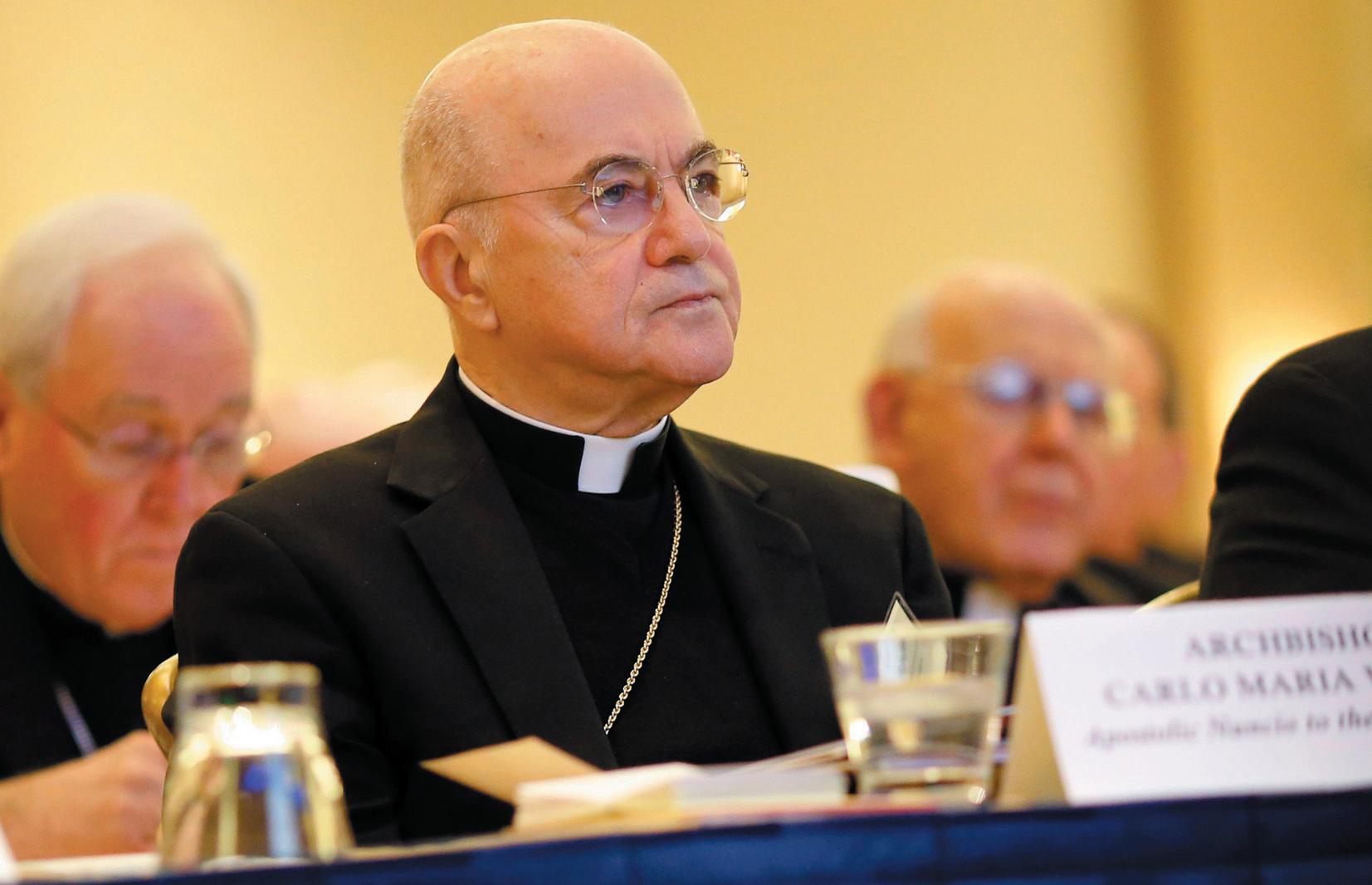
networks that reach 270 million homes in 145 countries, according to its Web site.
EWTN was launched in the early 1980’s by nun-magnate Mother Angelica, who was a media visionary committed to promoting traditional social values.
Earlier this week The New York Times reported that, two weeks ago, Vigano shared his plan with Timothy Busch, a Koch Brothers-like figure in conservative Catholic circles who sits on the board of EWTN. Busch said leaders of the Register had personally assured him that Pope Benedict, a favorite of conservatives, had confirmed Viganò’s account. Benedict and his representatives have declined to confirm the report.
the McCarrick case, Valli said.
“McCarrick was more like the trigger. (Viganò) had a wider vision,” he said. “What he really cared about (is that) since the end of John Paul II’s pontificate, the problem of homosexuality within the church was widely known. But it was covered up.”
A lot of the smaller Catholic organizations take a conservative line, perhaps reflecting the church politics of their financial backers.
— John Thavis, former bureau chief Catholic News Service
The Washington Post’s phone calls to Tosatti were not returned but he tweeted that his role was being overstated and that he’d merely edited the letter.
Valli told the Post Wednesday that he met three times with Vigano after they’d initially connected at a conference for conservatives.
The first time, in March, Vigano detailed a long list of internal Vatican problems.
The third and final time, Aug. 21, Vigano, wearing a baseball hat and sunglasses, handed Valli a memory card with a draft, the journalist said. The two outlined a plan to distribute the letter during Francis’ trip to Ireland, when the pope would be surrounded by reporters.
Vigano was motivated by much more than
A phone message left with Busch’s office was not returned. Yet while Catholics of all political persuasions suspect there is a cover-up among their leadership on the topic of abuse – and of McCarrick’s case specifically – even many conservatives say they want Vigano’s letter independently confirmed in part due to its connections with right-leaning Catholic media. U.S. Catholics’ general faith in their media, like Americans overall, seems to have decreased in recent decades, some longtime journalists in that field say, as the Web has spawned endless opinionated blogs that run on anonymous tips, which then influence the bigger Catholic news sites.
John Thavis, who covered the Vatican in Rome for decades and was bureau chief of the Catholic News Service before retiring recently, said the digital boom after 2000 greatly increased the number of Catholic media voices.
“A lot of the smaller Catholic organizations take a conservative line, perhaps reflecting the church politics of their financial backers,” he said. Vatican journalists
launched their own blogs, on which they could be more opinionated about papal politics – and usually on the conservative side, Thavis said.
In the early 2000s, the center-right Catholic News Agency was founded in Denver. CNA is owned now by EWTN, as is the Register, whose Web site Wednesday was populated with pieces about Vigano, homosexuality and transgenderism. A top priority of Valli and Tosatti and other Italian conservative journalists, Thavis said, are “their warnings about homosexuality.” The powerful Italian conservatives in the media, he said, are focused on preserving church practices in particular especially after the liberalizing changes of the Second Vatican Council in the 1960’s when the empowered left began pushing for even more changes such as allowing women to become priests. Conservatives have been particularly focused on sex and family as topics and were enraged by Francis’ encouragement of dialogue and debate about whether divorced Catholics should receive Communion.
After decades of rule by the traditional John Paul II, Thavis said the Vatican press corps was invested in JP2’s view of the church. He recalls a loud cheer in the press room when the cardinals in 2005 selected the like-minded Benedict as his successor. He also recalls the complaints in 2013 when newly-elected Pope Francis said in his first meeting with journalists he wouldn’t offer the traditional blessing his predecessors had because there were non-Christians in the corps and he wanted to show respect.
“It was revelatory for me to see how conservative (some of the media were) to certain church teachings and practices,” Thavis said.
Felicia SONMEZ Citizen news service
WASHINGTON — In a closed-door meeting with evangelical leaders, U.S. President Donald Trump on Monday warned of “violence” from the left if Democrats retake control of Congress in November, according to multiple reports.
The comments, which mark an escalation of Trump’s rhetoric, come amid deepening investigations into the president’s associates as well as a midterm battle that is entering its crucial final months.
“They will overturn everything that we’ve done, and they’ll do it quickly and violently, and violently,” Trump told the assembled leaders at the White House dinner, according to reports Tuesday by NBC News and the New York Times.
“There’s violence. When you look at an-
tifa and you look at some of these groups – these are violent people.”
Black-clad “antifa,” or anti-fascist, protesters made headlines last year when they allegedly attacked another group of demonstrators in Berkeley, California.
House Minority Leader Nancy Pelosi, DCalif., denounced the violence at the time, saying in a statement that “the violent actions of people calling themselves antifa in Berkeley this weekend deserve unequivocal condemnation, and the perpetrators should be arrested and prosecuted.”
At Monday’s dinner with the Christian leaders, Trump described the November election in dire terms.
“You’re one election away from losing everything that you’ve got,” he said, according to NBC News.
During the 2016 campaign, Trump
himself appeared to encourage violence in remarks at some of his rallies.
After one protester interrupted a Trump speech in Las Vegas in February 2016, the candidate declared: “I’d like to punch him in the face, I tell ya.”
At another event that month in Iowa, Trump referred to a recent incident in which a protester lobbed a tomato at the stage and told the crowd, “If you see somebody with a tomato, knock the crap out of them.”
The following month, at a rally in Michigan, Trump told audience members he would cover their legal costs if they were sued for any violence against protesters.
“Get him out. Try not to hurt him. If you do, I’ll defend you in court, don’t worry about it,” Trump said.
White House press secretary Sarah Huck-
abee Sanders said last year that Trump “in no way, form or fashion has ever promoted or encouraged violence.”
Trump also erroneously claimed on Monday that he had done away with the Johnson Amendment, which he described to the evangelical leaders as “disaster for you,” according to the NBC report.
The provision bars religious institutions and other tax-exempt organizations from endorsing political candidates.
A repeal of the Johnson Amendment was ultimately not included in last year’s Republican tax bill. While Trump signed an executive order aimed at making it easier for churches to take part in politics, an act of Congress would be required in order to repeal the provision itself.
John Wagner and Sarah Pulliam Bailey contributed to this report.




H&RBLOCKCANADAINC.INCOMETAXPROFESSIONAL BECOMEATAXPROTODAY!
EnrollinTaxAcademyandlearntoearnasanIncome
TaxProfessional
OVERVIEW:Seewhatittakestobecomeaproatincome taxesatH&RBlock’sTaxAcademy.Thealwaysindemandskillsandknowledgeyou’lllearncanopendoors torealjobopportunities.
CAREERBENEFITS: -Trainingfromindustryleaders -Theabilitytotackleanytaxsituation -Theopportunitytoworkasapart-timetaxprofessional atH&RBlock -Flexibilityandindependence
There’sneverbeenabettertimetoenroll.Classesstart thisSeptember. Visit:www.hrblocktaxacademy.ca Call:250-562-6247
CELEBRATIONOFLIFE
ForCharlieandGerryParlee Saturday,September8,2018 AtLegion-11amto2pm
BUSINESS OPPORTUNITY

Bradley John Newman September 20th, 1975 to June 4th, 2018
On June 1st, 2018 Bradley left this earth in mind and soul. On June 4th, 2018 Brad became a hero! The family walked Bradley down the corridor as his body left this world. That night he saved 4 other lives through organ donation. Brad leaves behind his beautiful wife, Shayla, and their two adorable children, McKinley and Robert. Also left mourning his passing are his beloved parents, Ron and Joyce Newman, sister, Virginia Welsh and husband Wayne, brother, Gardie Newman and wife Leslie, brother, Shane Newman and wife Michelle. His many Uncles, Aunts, cousins, nieces, nephews, and lots of friends are also left mourning his loss.
On September 2nd, 2018 we will be celebrating Brad’s life at the Eagles Hall on the Hart Highway, 6742 Dagg Road, Prince George, between 2 and 5 pm. There will be a cash bar, refreshments, and snacks. Come and raise a glass to his life. Bring your stories and memories, we would love to hear them. Please register to be an organ donor. You too can be someone’s hero.
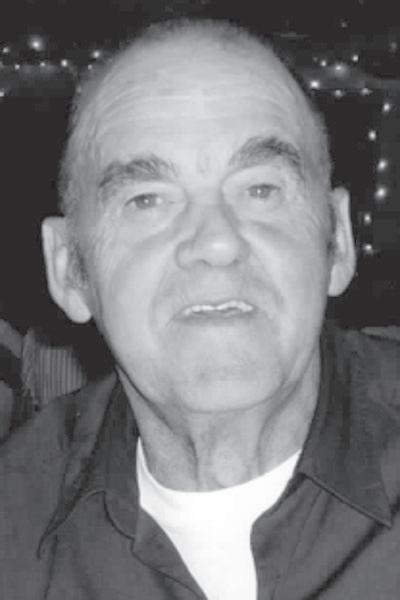
Gordon Mooney
March 28, 1936 - August 26, 2018
It is with great sadness that we announce the passing of Gordon Mooney. He passed away peacefully in his own home surrounded by his entire family. He will be missed by so many.
Gordon is survived by his wife of 59 years Margaret, his daughter Cheryl (Bud), and son Brad. He is also survived by two granddaughters Robynne (Adam) and Rachelle (Levi) and their sons Hayden, Linden, Tyson and Rowan. Gordon also leaves behind brothers Glen (Lilian) and Wayne as well as many other extended family members and friends. He was predeceased by his mother Ruby, his father Harold, as well as his brother Russell.
A celebration of life and luncheon will be held at the Hart Pioneer Center (6986 Hart Hwy) at 11:00 AM on Saturday September 1st. The family would like to thank all of his care givers as well as the Kidney Foundation. In lieu of flowers, donations to the kidney Foundation will be greatly appreciated.

Keep on truckin’ Dad!!!


Established Franchise Photography Business
Serving Northern B.C for over 35 years
Gross Revenues of $150.000 plus from seasonal work Lots of opportunity to expand the business. Transition support available to the right buyer
Serious Enquiries Only Office 250-596-9199 Cell 250-981-1472
BUSINESS OPPORTUNITY
Established Franchise Tax Preparation BusinessMackenzieservicing and McLeod Lake area for over 30 years.
Gross Revenues of $85,000 to $90,000 Annually and Potential to expand revenues in a growing economy.
Transition support available for the right buyer.
Serious Inquires Only Office (250)997-9003 Home (250)997-5538 Cell (250)990-0152


John “Jack” Currie Sept 23, 1929 - Aug 21, 2018
Jack grew up in Bowsman, MB. He married Emily and they raised 4 children together. They moved to BC to follow the work in road construction and met many good friends along the way. He loved all family and spending time with his grandchildren. Friends and family are welcome to attend a gathering at PG Seniors Centre at 425 Brunswick St on Sunday Sept 2 from 1 to 4pm





Barbara Cooper Barb passed away at home Aug. 19, 2018, at the age of 63. Barb was born in Brandon, Manitoba Sept. 10, 1954. She was predeceased by her parents Lawrence and Annie Alyward. Barb is survived by and will be greatly missed by her loving family, husband Alan, daughter Sheena (Jeff) Watson, grandsons Kaleb and Linden Watson, sister Dori (Jake), brothers Len (Linda), Gord (Nancy), nieces, nephews and many good friends. A Celebration of Life will be held on Sunday Sept. 9, 2018 at 1:00pm at Sheena and Jeff’s house. Please call Sheena 250-552-2479 or Alan 778-349-5116 for details and directions.




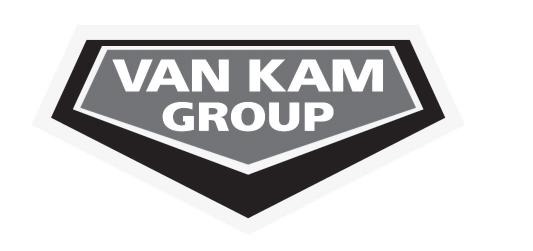





























































Get tips to improve your bottom line, every Friday with business coach Dave Fuller


cool chairs will definitely make everyone want to swing by
Megan McDONOUGH Citizen news service
Hanging around the house just got a little cooler. Popping up everywhere, from Instagram feeds to high-end design magazines, are hanging egg chairs. This seating option from the 1970s can add whimsy and bohemian flair to a more traditional space.
Blogger, decorator and product stylist Holli Rodrigues recently added the Kambree resin wicker hanging chair by Island Bay ($299.98, hayneedle.com) to her back porch to help transform it into a spot she calls a “vintage chic eclectic retreat.” She chronicled the small space’s dramatic redesign over the course of six weeks on her blog, Bees ’N Burlap. The spacious chair is now one of her favourite places to read, relax and listen to music.
contemporary Cloak
“I’ve called permanent dibs on it!” she wrote on her blog. Rodrigues’s chair is still available online. If you’re looking for a slightly different look, here are some of our favourites.






Currencies
These are indicative wholesale rates for foreign currency provided by the Bank of Canada on Thursday. Quotations in Canadian funds.
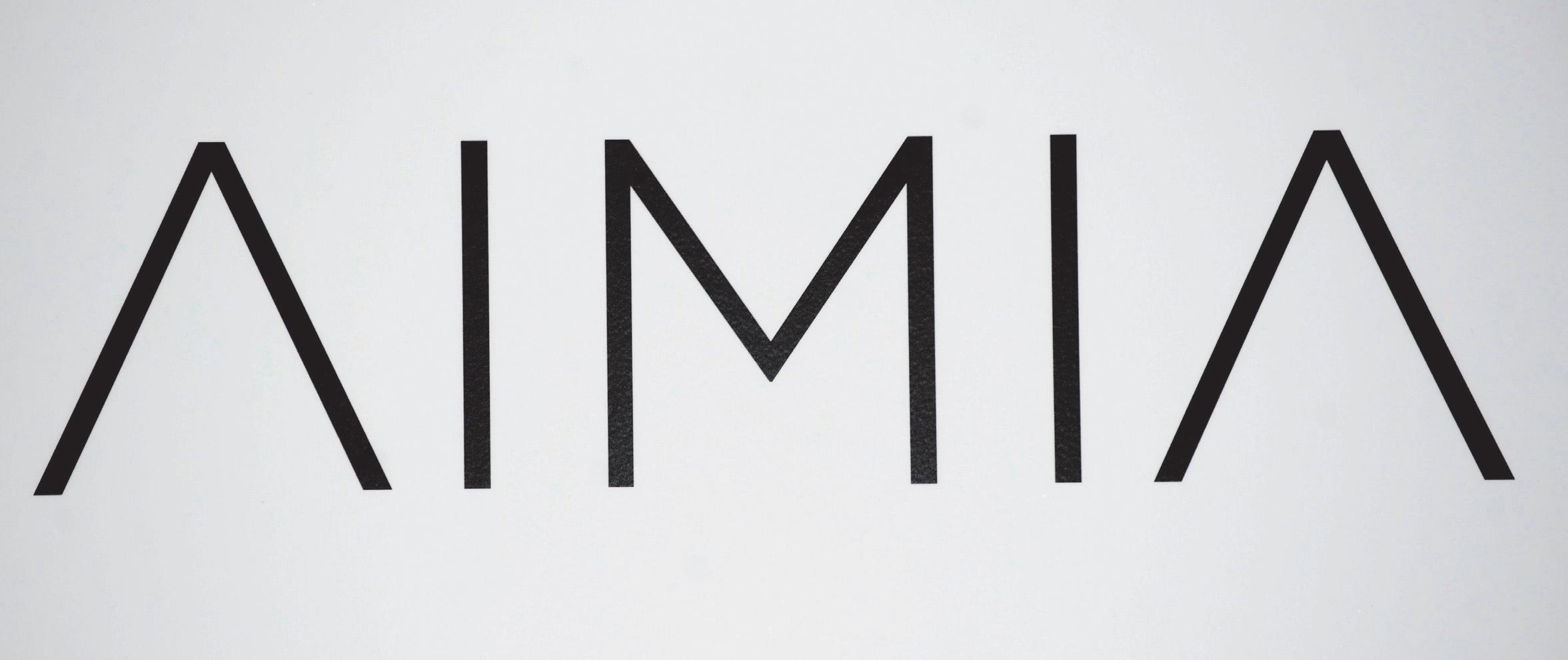
rules.
David PADDON Citizen news service
Financial highlights
Stocks are lower in afternoon trading on Wall Street Friday following a late loss the day before. Traders are keeping their eye on trade talks between the U.S. and Canada. There are hopes that the two sides will reach a preliminary trade deal later in the day, but there were few signs of progress.
Stocks: Stocks slid Thursday afternoon after Bloomberg News reported that the Trump administration could escalate the U.S.-China trade war next week by putting tariffs on $200 billion in imports. Meanwhile the U.S. and Canada are resuming trade negotiations. Keeping score: The S&P 500 index slid 4 points, or 0.2 per cent, to 2,896 as of 3:05 p.m. Eastern time. Trading was very light ahead of the Labor Day holiday in the U.S. on Monday. The Dow Jones Industrial Average fell 63 points, or 0.2 per cent, to 25,923. The Nasdaq composite rose 13 points, or 0.2 per cent, to 8,101. The Russell 2000 index of smaller-company stocks gained 5 points, or 0.3 per cent, to 1,737. Despite its losses the last two days, the S&P 500 is on track to finish August with a gain of 2.9 per cent, and the Nasdaq is up 5.6 per cent this month.
Currencies:
The dollar rose to 110.97 yen from 110.05 yen. The euro fell to $1.1603 from $1.1663. Gold futures: Gold rose 0.1 per cent to $1,206.70 an ounce. Silver dipped 0.3 per cent to $14.56 an ounce. Copper skidded 1.7 per cent to $2.67 a pound.
TORONTO (CP) — Canada’s main stock index joined other North American markets in closing lower Thursday on the possibility of new U.S. tariffs on China and unresolved NAFTA talks.
Reports that U.S. President Donald Trump could impose tariffs on US$200 billion in Chinese goods as early as next week caused investors to take a little breather, said Kash Pashootan, CEO and chief investment officer at First Avenue Investment Counsel. The S&P/TSX composite index closed down 18.74 points at 16,371.55 after hitting a low of 16,349.55 on 216.6 million shares traded. Gold and energy stocks were down on the day after a Federal Court of Appeal decision to quash the approval of the contentious Trans Mountain pipeline expansion. Materials, cannabis-heavy health care and base metals were off along with real estate, telecom, utilities and financials.
Aimia Inc. has agreed to settle a nine-year-old lawsuit over the expiry of Aeroplan mileage points and the closure of dormant Aeroplan accountssetting the stage for a return of points to eligible members of the loyalty program.
Aimia will deposit a set amount of Aeroplan miles into the accounts of eligible members if a court approves a settlement agreement announced Friday.
Details about who is eligible to receive the points, and other specific information, aren’t being made public at this time because the settlement is subject to approval by the Superior Court of Quebec, Aimia said.
Merchant Law Group launched the national class action in July 2009, nearly three years after Aimia announced in October 2006 that it would
change the rules for accumulating and redeeming Aeroplan miles.
The suit took aim at Aeroplan’s decision to cancel Aeroplan miles if there’s no activity in a member’s account within a 12-month period, as well as its decision to cancel points if they’re not used within seven years of acquisition.
Aeroplan eliminated the seven-year expiry date for points in June 2013, but continues to cancel accounts if there’s no accumulation or redemption activity in the previous 12 months.
Aimia said Friday that the proposed class action agreement is a positive resolution for members and stakeholders.
Lawyer Tony Merchant said Friday in a phone interview that he’s optimistic that the Quebec court will hear the case in the month of September and reach a decision quickly.
The company has undertaken
to do the work of finding which Aeroplan members are eligible for compensation, calculating how many points they are owed and depositing the points into the customer accounts, he said.
“In my view Aeroplan acted responsibly in settling in the manner that they’ve settled.” Merchant said. “This is a very recipient-friendly kind of settlement.”
Ryerson University associate professor Gabor Forgacs, who specializes in tourism, hospitality and branding, agreed.
“It doesn’t make good business sense to create some kind of animosity against your loyal customers.”
There’s also a significant portion of valid loyalty points that don’t get converted to airline tickets, he added.
“The customers never find the right opportunity, or forget about it or don’t keep the records. So, for whatever reason,
you don’t have to limit it as a business because a lot of it goes to waste anyway.”
However, Forgacs said, consumers like to collect points - especially business travellers who can use them for family trips - and airlines have discovered that data collected from their customers can be tremendously valuable.
“If they can move the needle just a fraction as a result of being smarter, with all this data, that translates into millions of dollars,” Forgacs said.
Last week, Montreal-based Aimia signed a tentative deal to sell the Aeroplan loyalty program to an Air Canada-led group, which includes TD Bank, CIBC and Visa Canada Corp. The consortium also agreed to assume about $1.9 billion in liabilities related to redeeming Aeroplan points after the current long-term deal with Aimia expires in July 2020.
Tara DESCHAMPS Citizen news service
TORONTO — Canadian entertainment associations are applauding the reversal of a decision that would have decreased the amount private-sector television groups are required to spend on Canadian programming.
The Canadian Radio-television and Telecommunications Commission said Thursday that it had reconsidered a decision it made last year and will now require Bell Media, Corus Entertainment Inc. and Rogers Communications Inc. to spend 7.5, 8.5 and five per cent respectively of their previous year’s revenues on programs of national interest in the English-language market.
The trio previously had to allocate five per cent of their revenues to such content.
The CRTC’s decision also means Frenchlanguage television groups Quebecor Inc. and Groupe V Medias will have to invest 75 per cent of their original programming expenditures in original content in a year, up from 50 per cent in the prior ruling.
Groups in both the English and French market will also be required to allocate an average of $5.5 million a year to support the production of musical programs.
The Alliance of Canadian Cinema, Television and Radio Artists (ACTRA), a national union representing 25,000 professional performers in the country, called the decision “a win for Canadian storytelling.”
“This was an important battle for us and our members to say it should not be a liability or a problem for broadcasters to produce Canadian stories. It should be in their interest,” said Elliott Anderson, the director of public policy and communications.
Broadcasters argued that they shouldn’t be
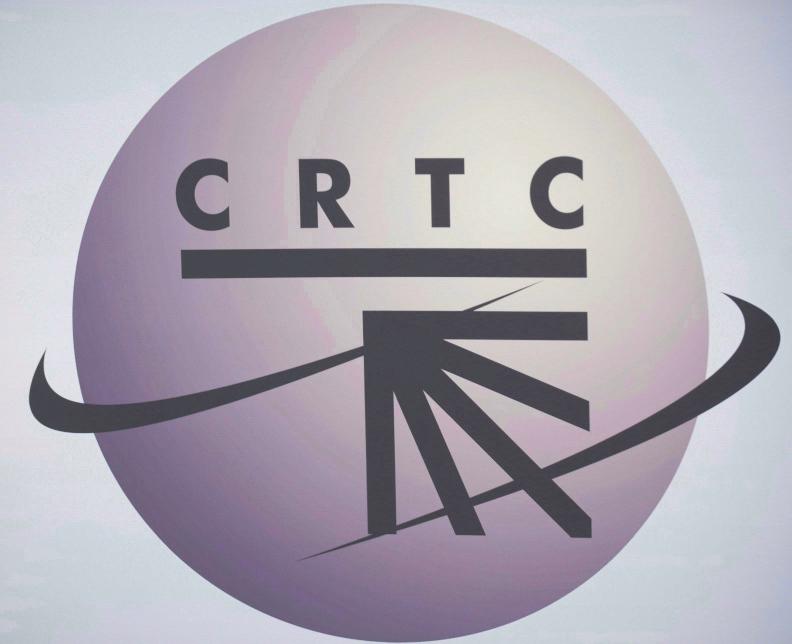
tives and stories that make up our national culture.”
The CRTC’s change in requirements comes into effect on Saturday and will last until 2022.
The modifications were triggered by the federal cabinet asking the CRTC to re-evaluate its decision in May 2017 and rounds of consultations done in both the English and French markets.
Dimitri Gourdin, Groupe V’s executive vice-president of strategy and communications, said the company already exceeds the CRTC’s requirement, by dedicating 94 per cent of its budget to original Frenchlanguage programming.
However, Gourdin said he was “not happy” that the CRTC was placing more regulations on television companies.
saddled with the burden of telling Canadian stories because they are competing with U.S. streaming giant Netflix.
“I think it was nice that the CRTC did not side with the argument and (said) this is something that is worthy,” he said.
Scott Garvie, chairman of the Canadian Media Producers Association advocacy group and the senior vice president of production company Shaftesbury, was equally enthusiastic about the decision.
“Today’s CRTC decision means more jobs, more economic output, and most importantly, more of the shows that Canadians love,” he said in a press release.
“By increasing the required investment in programs of national interest, the CRTC has underscored the important role that Canada’s independent producers and other creators play in a broadcasting system that reflects the diversity of voices, perspec-
“Our industry is under tremendous pressure coming from the declining advertising dollar, from the competition from other platforms and from outside of Canada. The industry is really under pressure and this is a question of surviving,” he said.
Gourdin said he was also frustrated with the requirements about supporting music programming.
“What the CRTC wants from us as broadcasters is to support video clips and we all know that no one is consuming video clips on TV,” he said. “That is why I think that the CRTC is totally disconnected from reality.”
Rogers and Quebecor did not immediately respond to requests for comment.
Corus spokeswoman Cheryl Fullerton told The Canadian Press the company was reviewing the decision, but had nothing further to say.
Bell refused to comment.

Jena MCGREGOR
As Labour Day arrives – and economic inequality rises on the political agenda – a little noticed measure in the recently signed defense spending bill aims to address the widening wealth divide between workers and the owners or top executives who manage them. The measure, co-sponsored by Sen. Kirsten Gillibrand, D-N.Y., is intended to expand financing options and raise awareness for programs that can help employees become partial owners of the companies where they work.
The new provision could also help address what has been called a “silver tsunami” of retiring Baby Boomer business owners. Much has been made of what that generation’s departure from the workforce will mean – a loss of institutional knowledge, a shift in the job market and a drain on Social Security. But less attention has been paid to the wave of retiring Boomers who own closely held private businesses. They will need to sell their companies, transition them to a new generation of owners – or risk shutting them down, cutting jobs in the process.
The provision, known as the Main Street Employee Ownership Act before it was added to this year’s defense bill, will make it possible for firms to use Small Business Administration loans to finance what’s known as employee stock ownership plans, or ESOPs, an arrangement that can help transfer ownership of the company to employees rather than have to find a suitable buyer or rely on family members who may be ill-suited or unprepared to keep the lights on.
In an ESOP, companies get tax incentives to either set up a trust fund into which they contribute shares or to finance the purchase of shares through a loan. Companies then give shares to all employees in amounts based on their relative pay or on a more equal basis.
The new provision also empowers the SBA to assist with employee ownership plans and raise awareness of the approach. The plans are predominantly used by closely held or privately owned companies – and while some publicly traded companies, including Procter & Gamble, use them, they are much rarer.
The new measure is “the most significant policy change on employee share ownership in over two decades,” said Joseph Blasi, director of the Institute for the Study of Employee Ownership and
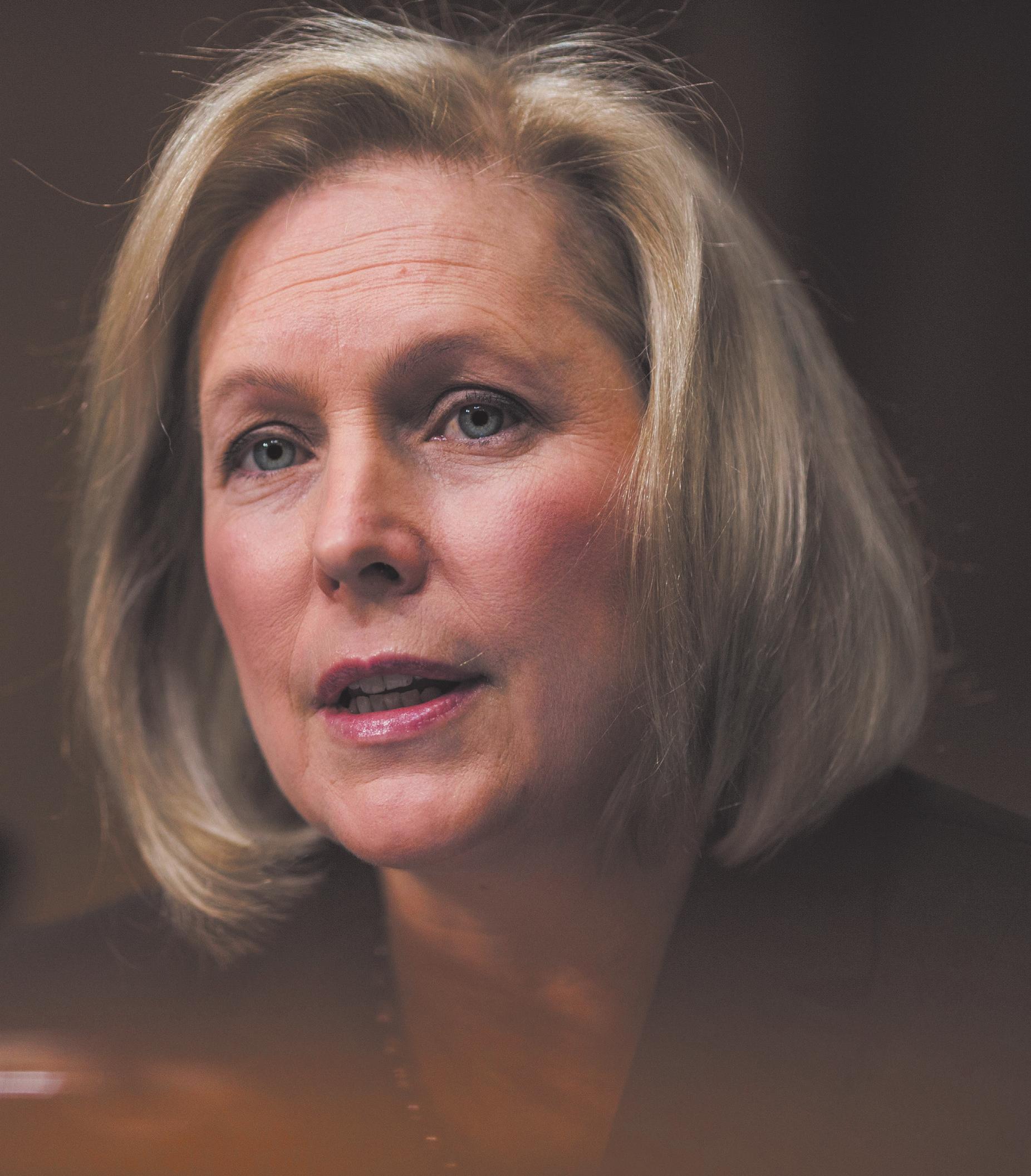
Profit Sharing at Rutgers University, who worked with Gillibrand’s office on the bill. Still, its immediate impact is probably limited to small companies: The SBA loans that can be used are capped at $5 million, though they can be combined with other financing.
But it’s also a rare bipartisan stab at finding a way to address the gap in wealth, according to Corey Rosen, founder of the National Center for Employee Ownership, a nonprofit membership group. One economist’s analysis found that the richest one percent of American households own 40 percent of the country’s wealth, the highest it has been in 50 years.
“We’re grasping for ways to deal with economic inequality and pretty much the two sides can’t agree on anything – except this,” Rosen said. “While this particular


profits went to employees (in the form of raises) or shareholders (in the form of higher stock prices) depended on whether there was a competitive labor market. She said it’s not always clear in some research whether companies perform better because they have employee ownership, or whether better-performing companies are just more likely to implement equity plans.
Employee ownership plans are far less prevalent among publicly traded companies, who may not to offer them for various reasons – investors may perceive they are a way to entrench managers with friendly employees, company officers could believe that equity should be reserved for top managers or top performers, or they may want to focus on more diversified retirement plan options. Meanwhile, employee stock ownership plans are complicated structures that mean additional governance issues, which could limit the growth of their use.
Still, some companies have decided to add them to give more employees access to equity, increase a sense of ownership among workers, and try to plan for the future. In June, Tuff Shed, the Denver-based maker of outdoor storage buildings, added an ESOP for its more than 1,300 employees after seeing that many of its employees weren’t participating in their 401(k) plan or getting the full company match.
bill is just one step in that direction, it indicates here’s a path that’s worth exploring.”
As of the end of 2014, the average employee share in ESOPs of closely held private companies was $134,114, said Blasi. (The average 401(k) balance at the end of 2015 was $73,357, according to data from the nonprofit Employee Benefits Research Institute.) Workers can only pocket the value of their shares from ESOPs when they leave the company; they then sell the shares back to their employer.
While ESOPs can help workers build wealth, some research has shown benefits for employers. In a National Bureau of Economic Research study co-authored by Blasi, surveys of 40,000 workers showed that those with company stock plans were more likely to
say they would intervene if they saw a colleague slacking off and far less likely to say they’d leave the company – as long as they didn’t feel micromanaged or like they weren’t involved in helping to solve company problems. (That could send a mixed message to workers: We’re going to give you ownership, but not make you feel like you have any.) Another study found that companies that set up employee stock ownership plans were less likely than those without them to go bankrupt or disappear for other reasons.
And Paige Ouimet, a professor at the University of North Carolina’s business school, has found in research that publicly held companies with ESOPs had improved productivity. But whether more of the gains from higher
CEO Tom Saurey could have made a straight, no-stringsattached contribution to workers’ 401(k) plans, but that wouldn’t have also helped him begin to plan for the future transition of his company once he’s ready to move on, said Phil Worth, the company’s vice president of marketing. The new plan will give most employees 3 percent of their salaries in the form of company stock to an ESOP and still offer them a 401(k) to which they can contribute themselves.
Even if Saurey isn’t predicting he’ll go anywhere for more than a decade, an ESOP still helps the company prepare for that eventual handoff. “Who’s going to be in control of the company someday? If not [Saurey], who’s the most passionate about the company? Employees,” Worth said. Making employees feel more like owners at the company was also a rationale.
“The day you give somebody a raise is great. Everybody feels good, but the lasting effect only goes so long,” he said. “A sense of ownership is a different conversation.”
Citizen news service
The parent company of Tim Hortons is denying a claim by a group of franchisees that the coffee pots they’re required to use have been shattering and injuring employees.
Restaurant Brands International says the claims of faulty coffee pots are yet another “false accusation” from a group of franchisees with whom the company has been embroiled in a war of words and lawsuits for more than a year.
“We continue to receive reports of shattering coffee and tea pots,” reads a letter from Peter Proszanski, a lawyer at Toronto-based
Himelfarb Proszanski and the Great White North Franchisee Association’s counsel, to the head of legal at Tim Hortons dated Thursday, Aug. 30.
The letter alleges an “unprecedented” number of such incidents, including one as recently as August 29, have emerged since the association asked members to report any issues. The association is an unsanctioned franchisee group started more than a year ago to give a voice to restaurant owners concerned over alleged mismanagement. It claims to represent about half of Canada’s franchisees and also has an American chapter.

The group first brought the issue to RBI more than a year ago in a letter dated July 21, 2017. Though RBI acknowledged the group’s concern, it failed to follow up, Proszanski wrote.
The group wants RBI to investigate the pots, which it says appear to weigh less than ones previously used, according to the letter.
It alleges the coffee and tea pots put franchisees, employees and customers at risk, and asks for permission to source the pots from other suppliers. If the company fails to respond by September 7, Proszanski wrote the group will interpret that as consent to choose an alternate supplier.

RBI denies the allegations. “I can tell you with certainty that the suggestion that Tim Hortons or RBI in any way has changed the manufacturing of our coffee pots is 100 per cent false,” wrote spokeswoman Jane Almeida in an emailed statement.
The company spoke to the manufacturer, which confirmed it has not changed how it makes or sources the product in over a decade, she said. The manufacturer also informed RBI that other brands using the same pot have not reported such issues.
“We have conducted extensive quality assurance testing that has proven that the only way to consistently replicate the breakage of a glass pot is if it is used incorrectly.” Almeida said the franchisee group “makes frequent and false accusations for the sole purpose of what we can only believe is generating media awareness for their small group.”
The group sent the letter to RBI and one hour later to the media, she said, which “tells you everything you need to know about their sincerity in working with the company.”
Some franchisees and management have had a tense relationship since RBI took over the coffee-anddoughnut chain. The association filed a classaction lawsuit against RBI in June 2017, alleging it improperly used money from a national advertising fund. The company denies the allegations and they have not been proven in court. It’s one of several lawsuits between the group, which alleges mismanagement, and the company, which has expressed frustration at the association’s public besmirching of the brand.
RBI executives owned up to making mistakes in how they’ve dealt with franchisees in the past, but say they’re now committed to better communication with restaurant owners and a new “winning together” plan to improve customer experience and sales.
BRIOUX Citizen news service
Bill
TORONTO — Canada has produced some of the finest comedians working today, many of whom got their start in standup. Jim Carrey, Howie Mandel, Norm Macdonald and Russell Peters all launched their careers on Canadian stages.
The next generation of stars may be found on Homegrown Comics, taped earlier this summer at the Just For Laughs comedy festival in Montreal. The hour-long special premieres Monday, Sept. 3 on Comedy.
These young performers boast cultures and backgrounds as diverse as Canada itself. Adrienne Fish, Brandon Ash-Mohammed, Cara Connors, Hoodo Hersi, Jacob Samuel, Jarrett Campbell, Kyle Brownrigg, Nick Nemeroff, Pat Burtscher, and Paul Rabliauskas will all be showcased.
This is a lineup where faiths, ethnic origins, sexual identities and genders are all thrown into a giant Tim Hortons blender. Introducing them will be one of the rising stars in Canadian comedy, K. Trevor Wilson. Six years ago, on his first trip to Just for Laughs, he won the Homegrown event when it was still a competition. He’s been back every year since, a top draw after emerging as Squirrely Dan on CraveTV’s Letterkenny.
“It’s crazy,” says the 37-year-old.
“I had to have a talk with my girlfriend earlier this year because it’s the first time in my comedy career I’ve been financially stable and we’re not worried about the next paycheque. I have to get myself out of that mindset of needing to take every job because I have to put food on the table.”
“Winning that Homegrown award really put me out there,” says Wilson, who followed the Montreal success with a show that same fall at Toronto’s JFL42.
“That led to me opening for Louis CK and Patton Oswalt. Once I had that on my resume, people started returning my phone calls.”
That led to opening for other established laugh-getters such as Sarah Silverman and Paul Provenza, then more shows at Just for Laughs and JFL42.
“Every time I’ve done Just For

Laughs it’s opened new doors, which have opened new doors.”
Eventually, the big door that swung open was Letterkenny, renewed for a whopping 42 episodes earlier this year. He’s also an integral part of the Letterkenny Live cast showcases that took place across Canada at the start of this year, with another mini-tour scheduled for December.
K. Trev or ‘Bae Trev’ is a one-ofa-kind actor,” says Letterkenny star and creator Jared Keeso.
“I’ve had the pleasure of seeing his standup 50-plus times and no show is the same. He is constantly looking for new ways to stimulate and engage his audience.”
Executive producer Mark Montefiore echoes Keeso’s admiration of Wilson. “He has a unique ability to counter the super-fast one-line chirps of Letterkenny with a perfectly paced, hilarious story.”
Wilson can also zing one-liners with the best of them. For two years in a row, he was a quarter finalist among a field of top North American comedians at Jeff Ross’s annual Roast Battle competition.
“He comes in with a bit of a swagger, which is fun to watch,” Ross noted at last year’s competition, held in Montreal. “He’s also lovable,” he adds. Roasters are usually “spitting venom, but he has a heart under all those clogged arteries.”
Wilson’s girth made him a big target for fellow comics. At last year’s Roast Battle, celebrity judge Wanda Sykes called him, “the brother who was too fat for Duck Dynasty.’
The Toronto native doesn’t duck those jabs – he actually encourages them, noting how he and his fellow comics will give each other ammunition heading into roast events, “because we’re all buddies and we wanted to put on a good show.”
Besides, Wilson has the last laugh after shedding 36 kilograms over the past year-and-a-half.
“The diabetes agreed with me,” says the comedian, who was diagnosed with Type 2 diabetes and successfully adjusted his diet to the point where he no longer has to take medication.
Wilson knows that the first job
of every Canadian comedian is survival.
“There’s not opportunity around every corner for a Canadian comedian. You really do this because you love it, because you’re going
Potential customers are reading this ad right now. Call 250-562-3301 to advertise in The Citizen today

to spend most of your career playing in the middle of nowhere, for OK money. You do it because you want to do it, because you love making people laugh, because you love doing standup.”






Travis M. ANDREWS Citizen news service
Lend ye ears! Spotify hath made a proclamation, and it is thus: Drake has hereby been duly crowned, as his song, In My Feelings, hath been adorned with that sought-after but elusive “song of the summer” title. Such an absurdly arbitrary designation surely deserves the Queen’s English, until you take a closer look.
The streaming service’s criterion for awarding the superlative is astoundingly narrow. It simply goes to the song that was streamed the most between June 1 and Aug. 20. Drake’s Drakeiest song, which begins with his Drakeiest line (“Kiki, do you love me?”), racked up 393 million streams in that short 81-day span – so it got the label.
There are several factors that likely contributed to those streams that have nothing to do with the quality of In My Feelings. Nicki Minaj pointed as much out in her epic rant following the slightly disappointing performance of her album, Queen, when she tweeted that “Spotify put drake’s face on every playlist.” She’s not wrong. In a first for Spotify, Drake’s music was so heavily promoted on the streaming service that, as Billboard noted, “his image was even used on (playlists) that did not feature his music – Best of British, Massive Dance Hits and Happy Pop Hits among them.” The promotion proved a double-edged sword. He shattered streaming records with his album Scorpion, but Spotify was reportedly inundated with angry Drake-disliking patrons demanding refunds. But what made this song, in particular, so popular? Its aforementioned Drakeiness – from its emoromantic lyrics to its New Orleans bounce-inspired beat – certainly wormed its way into a few ears. But it truly took off when the chorus was transformed into a popular meme. Comedian Shiggy posted a video of himself dancing to the song, inspiring a viral dance challenge that overtook social media and (somehow) led to a Florida man being hit by a car. (The man was OK. He even appeared on Jimmy Kimmel Live!) So, sure, there’s certainly a convincing argument for the coronation of In My Feelings.
But aside from being popular, what does the song mean, particularly in the politically fraught climate of 2018? And does it need to mean anything?
If its cultural impact amounts to nothing more than even more people making fun of the already constantly mocked Drake and a guy getting slammed by a vehicle, does it deserve the title? Particularly in a year that saw women – particularly women of colour – breaking barrier after barrier? Or a year that brought the music video back as a biting cultural criticism? Or one that saw the musical convergence of pop’s biggest stars?
Here are some other contenders that fit that mold.
• Childish Gambino, This Is America If we’re taking more than popularity into account, then Childish Gambino has a strong case for song of the summer.
Just as the weather was growing balmy in May, the song arrived in a memorable Saturday Night Live performance and a more memorable music video on YouTube, which was immediately dissected. The song was scathing enough, referencing police brutality and high-end brands with equal ease. But the Hiro Murai-directed video was a work of eviscerating art, packed with so many references to America’s everyday racism that a few views are required to notice them all.
• The Carters, APESHIT
Speaking of visual songs, one tune might have taken the cake if not for the bizarre way in which we consume music today. The pop-culture world was beside itself when Beyoncé and Jay-Z, two of the biggest pop stars, wed. So the excitement would at least double when the two put out a record together as the Carters – a surprise record, at that! – right?
Not really. The record flew mostly under the radar, likely because it was released exclusively on Tidal, Jay-Z’s minuscule streaming service that has only about three million active users to Spotify’s whopping 70 million. It never stood a chance. Not there, at least. YouTube is much more populist, so the couple used it to drop a Ricky Saiz-directed video for the song APESHIT, which finds the couple gallivanting through the Louvre in Paris with a few dancers in nude bodysuits.
• XXXTentacion, SAD!
The young rapper was monumentally famous when he was fatally shot on June 18. His songs – like his turbulent life – captured the attentions of millions when they were still free files on SoundCloud. Before he died, several of his songs and both of his albums had already climbed up the charts.
SAD! became the first posthumous No. 1 hit for a lead soloist since Notorious B.I.G.’s Mo Money Mo Problems in 1997. Within days of XXXTentacion’s death, the song skyrocketed to the top of the Billboard 100, from No. 52 to No. 1.
It’s the perfect encapsulation of the rapper, a haunting, sorrowful ballad with wrenchingly simple lines such as “Suicide if you ever try to let go / I’m sad and low, yeah.” And it’s likely his last big hurrah.

movies of the summer.
Anousha SAKOUI Citizen news service
Movie theatres are having their best summer in two decades, reversing the losses from 2017’s disappointing season and showing resiliency in the Netflix era. North American ticket sales will close out the summer season with a more than 14 per cent increase, research firm ComScore Inc. estimated, fueled by the outsize performance of Walt Disney Co.’s Incredibles 2 and Avengers: Infinity War. That’s the largest percentage gain since 1998.
The season officially draws to a close with the Labour Day weekend.
“The notion that streaming has led to a decline in cinema attendance is really over-exaggerated,” said Phil Contrino, a spokesman for the National Association of Theatre Owners.
Summer ticket revenue, always dependent on the studios’ big-budget pictures, can be volatile. Last year, sales plummeted a similar 14 per cent when a few major releases came up short. Still, the spoils aren’t shared equally. Disney has almost doubled its sales from a year ago, according to Box Office Mojo, while Universal Pictures and Paramount are also up substantially. But other major studios are down.
One concern that may also may fade is the disruption caused in the U.S. by MoviePass, which shook the industry by offering unlimited moviegoing for under $10 a month. Constrained by losses, the service is now limiting customers to three movies a month, and major exhibitors including AMC Entertainment Holdings Inc. have come up with their own subscription plans.
With the summer bouncing sharply higher, analysts are raising their forecasts for the full year, crediting the Disney blockbusters and surprise hits like Crazy Rich Asians and The Meg, an action film about a giant shark.
Leo Kulp, an analyst at RBC Capital Markets, predicts full-year growth of five per cent, reaching a new record, after projecting a flat 2018 previously.
One caveat: those forecasts include the effect of higher ticket prices, rather than just a stampede of film-goers to the cinema. They also hinge on upcoming films performing well. That includes potential Oscar contenders like A Star Is Born, as well as more commercial fare like Mary Poppins Returns.
Citizen news service
Based on a 1978 novel by Penelope Fitzgerald, The Bookshop, in movie form, tells the quiet, unhurried and gently bittersweet tale of a widow (Emily Mortimer) whose dream is to open a bookstore. That Florence Green has decided to do so in a small English town where most don’t like to read – and in a building that the local grande dame (Patricia Clarkson) has set her mind on acquiring for a different purpose – lends the film some much-needed friction. It isn’t much, nor is the fact that Florence has decided to offer Vladimir Nabokov’s controversial Lolita for sale.
The story is set in the mid-1950s, and that racy title induces tiny paroxysms of scandal into the sleepy village where the film takes place. But the subtext of shock value and the implication that there might be book-banning in the works are muted, at best, and almost don’t materialize on-screen. There is, however, a undeniable foreshadowing of the printed word’s demise.
Mostly, The Bookshop is a pretext to watch three great actors do their thing: Mortimer, as the film’s mousy but surprisingly formidable heroine; Clarkson, as her smiling adversary, Violet Gamart; and Bill Nighy, as the town’s reclusive loner – and its only voracious reader – Mr. Brundish, who comes to Florence’s aid and advocacy.
Alas, his chivalry may be too little and too late.
That mood of lost opportunity – manifesting itself in the whiff of a possible romance between the 60-something Brundish and two-decades-younger Florence – is a suggestion that blows in and then is gone, like a half-imagined fragrance. It’s a feeling that pervades The Bookshop and gives it flavour.
Written and directed by Isabel Coixet, who also worked with Clarkson in the lovely Learning to Drive, The Bookshop is a story that is less dependent on incident than on mood and character. Some of the most interesting scenes involve Florence’s shop assistant, Christine (Honor Kneafsey), a young girl who has a precocious tongue and spirit, and Milo North (James Lance), a charming but disreputable BBC producer who lives in the town and who is not to be trusted.
As easy as it is to spot Milo’s sleaziness, it’s harder to know exactly what to make of The Bookshop. It isn’t really a love story (except if you count the love of reading). And it isn’t really a story about a place or time where books are truly in jeopardy, despite the prominent appearance of Ray Bradbury’s Fahrenheit 451 (which augurs the film’s climax in an unexpected way).
It’s a strange film: small, sad (without being tragic) and yet sweet without being syrupy. The Bookshop doesn’t lend itself to easy explication. Like the best novels, meaning is to be savoured, not summarized.
— Three stars
